Vaccines for preventing rotavirus diarrhoea: vaccines in use
- PMID: 34788488
- PMCID: PMC8597890
- DOI: 10.1002/14651858.CD008521.pub6
Vaccines for preventing rotavirus diarrhoea: vaccines in use
Abstract
Background: Rotavirus is a common cause of diarrhoea, diarrhoea-related hospital admissions, and diarrhoea-related deaths worldwide. Rotavirus vaccines prequalified by the World Health Organization (WHO) include Rotarix (GlaxoSmithKline), RotaTeq (Merck), and, more recently, Rotasiil (Serum Institute of India Ltd.), and Rotavac (Bharat Biotech Ltd.).
Objectives: To evaluate rotavirus vaccines prequalified by the WHO for their efficacy and safety in children.
Search methods: On 30 November 2020, we searched PubMed, the Cochrane Infectious Diseases Group Specialized Register, CENTRAL (published in the Cochrane Library), Embase, LILACS, Science Citation Index Expanded, Social Sciences Citation Index, Conference Proceedings Citation Index-Science, Conference Proceedings Citation Index-Social Science & Humanities. We also searched the WHO ICTRP, ClinicalTrials.gov, clinical trial reports from manufacturers' websites, and reference lists of included studies, and relevant systematic reviews.
Selection criteria: We selected randomized controlled trials (RCTs) conducted in children that compared rotavirus vaccines prequalified for use by the WHO with either placebo or no intervention.
Data collection and analysis: Two authors independently assessed trial eligibility and assessed risk of bias. One author extracted data and a second author cross-checked them. We combined dichotomous data using the risk ratio (RR) and 95% confidence interval (CI). We stratified the analyses by under-five country mortality rate and used GRADE to evaluate evidence certainty.
Main results: Sixty trials met the inclusion criteria and enrolled a total of 228,233 participants. Thirty-six trials (119,114 participants) assessed Rotarix, 15 trials RotaTeq (88,934 participants), five trials Rotasiil (11,753 participants), and four trials Rotavac (8432 participants). Rotarix Infants vaccinated and followed up for the first year of life In low-mortality countries, Rotarix prevented 93% of severe rotavirus diarrhoea cases (14,976 participants, 4 trials; high-certainty evidence), and 52% of severe all-cause diarrhoea cases (3874 participants, 1 trial; moderate-certainty evidence). In medium-mortality countries, Rotarix prevented 79% of severe rotavirus diarrhoea cases (31,671 participants, 4 trials; high-certainty evidence), and 36% of severe all-cause diarrhoea cases (26,479 participants, 2 trials; high-certainty evidence). In high-mortality countries, Rotarix prevented 58% of severe rotavirus diarrhoea cases (15,882 participants, 4 trials; high-certainty evidence), and 27% of severe all-cause diarrhoea cases (5639 participants, 2 trials; high-certainty evidence). Children vaccinated and followed up for two years In low-mortality countries, Rotarix prevented 90% of severe rotavirus diarrhoea cases (18,145 participants, 6 trials; high-certainty evidence), and 51% of severe all-cause diarrhoea episodes (6269 participants, 2 trials; moderate-certainty evidence). In medium-mortality countries, Rotarix prevented 77% of severe rotavirus diarrhoea cases (28,834 participants, 3 trials; high-certainty evidence), and 26% of severe all-cause diarrhoea cases (23,317 participants, 2 trials; moderate-certainty evidence). In high-mortality countries, Rotarix prevented 35% of severe rotavirus diarrhoea cases (13,768 participants, 2 trials; moderate-certainty evidence), and 17% of severe all-cause diarrhoea cases (2764 participants, 1 trial; high-certainty evidence). RotaTeq Infants vaccinated and followed up for the first year of life In low-mortality countries, RotaTeq prevented 97% of severe rotavirus diarrhoea cases (5442 participants, 2 trials; high-certainty evidence). In medium-mortality countries, RotaTeq prevented 79% of severe rotavirus diarrhoea cases (3863 participants, 1 trial; low-certainty evidence). In high-mortality countries, RotaTeq prevented 57% of severe rotavirus diarrhoea cases (6775 participants, 2 trials; high-certainty evidence), but there is probably little or no difference between vaccine and placebo for severe all-cause diarrhoea (1 trial, 4085 participants; moderate-certainty evidence). Children vaccinated and followed up for two years In low-mortality countries, RotaTeq prevented 96% of severe rotavirus diarrhoea cases (5442 participants, 2 trials; high-certainty evidence). In medium-mortality countries, RotaTeq prevented 79% of severe rotavirus diarrhoea cases (3863 participants, 1 trial; low-certainty evidence). In high-mortality countries, RotaTeq prevented 44% of severe rotavirus diarrhoea cases (6744 participants, 2 trials; high-certainty evidence), and 15% of severe all-cause diarrhoea cases (5977 participants, 2 trials; high-certainty evidence). We did not identify RotaTeq studies reporting on severe all-cause diarrhoea in low- or medium-mortality countries. Rotasiil Rotasiil has not been assessed in any RCT in countries with low or medium child mortality. Infants vaccinated and followed up for the first year of life In high-mortality countries, Rotasiil prevented 48% of severe rotavirus diarrhoea cases (11,008 participants, 2 trials; high-certainty evidence), and resulted in little to no difference in severe all-cause diarrhoea cases (11,008 participants, 2 trials; high-certainty evidence). Children vaccinated and followed up for two years In high-mortality countries, Rotasiil prevented 44% of severe rotavirus diarrhoea cases (11,008 participants, 2 trials; high-certainty evidence), and resulted in little to no difference in severe all-cause diarrhoea cases (11,008 participants, 2 trials; high-certainty evidence). Rotavac Rotavac has not been assessed in any RCT in countries with low or medium child mortality. Infants vaccinated and followed up for the first year of life In high-mortality countries, Rotavac prevented 57% of severe rotavirus diarrhoea cases (6799 participants, 1 trial; moderate-certainty evidence), and 16% of severe all-cause diarrhoea cases (6799 participants, 1 trial; moderate-certainty evidence). Children vaccinated and followed up for two years In high-mortality countries, Rotavac prevented 54% of severe rotavirus diarrhoea cases (6541 participants, 1 trial; moderate-certainty evidence); no Rotavac studies have reported on severe all-cause diarrhoea at two-years follow-up. Safety No increased risk of serious adverse events (SAEs) was detected with Rotarix (103,714 participants, 31 trials; high-certainty evidence), RotaTeq (82,502 participants, 14 trials; moderate to high-certainty evidence), Rotasiil (11,646 participants, 3 trials; high-certainty evidence), or Rotavac (8210 participants, 3 trials; moderate-certainty evidence). Deaths were infrequent and the analysis had insufficient evidence to show an effect on all-cause mortality. Intussusception was rare. AUTHORS' CONCLUSIONS: Rotarix, RotaTeq, Rotasiil, and Rotavac prevent episodes of rotavirus diarrhoea. The relative effect estimate is smaller in high-mortality than in low-mortality countries, but more episodes are prevented in high-mortality settings as the baseline risk is higher. In high-mortality countries some results suggest lower efficacy in the second year. We found no increased risk of serious adverse events, including intussusception, from any of the prequalified rotavirus vaccines.
Trial registration: ClinicalTrials.gov NCT00480324.
Copyright © 2021 The Authors. Cochrane Database of Systematic Reviews published by John Wiley & Sons, Ltd. on behalf of The Cochrane Collaboration.
Conflict of interest statement
Hanna Bergman received payment for work on this review from Cochrane Response, an evidence services unit operated by the Cochrane Collaboration. Cochrane Response was contracted by the WHO to produce a systematic review upon which a part of this review update is based (see ‘Sources of support').
Nigel Cunliffe received research grant support and honoraria for participation in Data Safety Monitoring Boards from GlaxoSmithKline Biologicals.
Daniel Hungerford received research grant support from GlaxoSmithKline Biologicals and Sanofi Pasteur and Merck and Co after the closure of Sanofi Pasteur‐MSD in December 2016.
Duduzile Ndwandwe has no financial interest nor any competing interest in this work.
Femi Pitan has no financial interest nor any competing interest in this work.
Nicholas Henschke received payment for work on this review from Cochrane Response, an evidence services unit operated by the Cochrane Collaboration. Cochrane Response was contracted by the WHO to produce a systematic review upon which a part of this review update is based (see ‘Sources of support').
Karla Soares‐Weiser has received payment in the past (not for the current update) to conduct this review from the DFID UK via the Effective Health Care Research Programme Consortium (see ‘Sources of support').
Figures

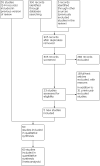
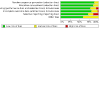

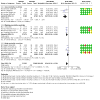



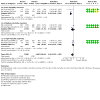
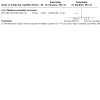
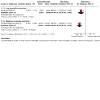
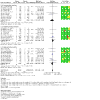

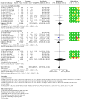


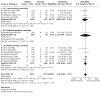
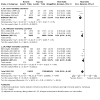
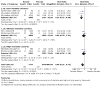
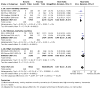
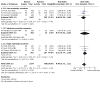
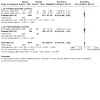
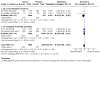


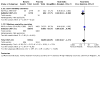




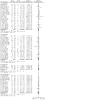
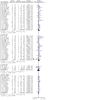
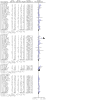
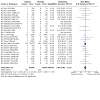


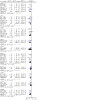
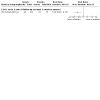



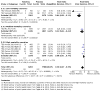
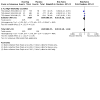
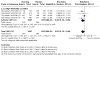
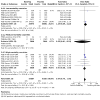
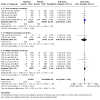
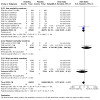



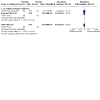
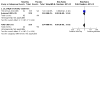
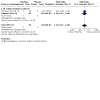
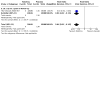



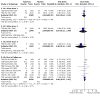

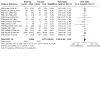
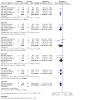
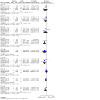
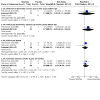
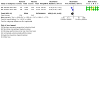


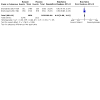

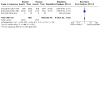
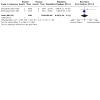
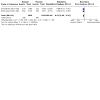

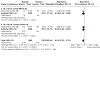
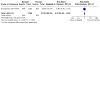

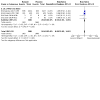

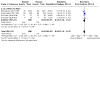
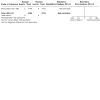
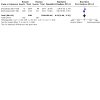
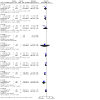
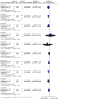
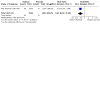
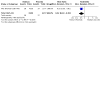
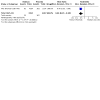

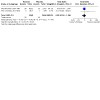
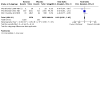
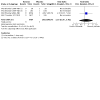

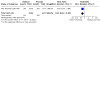


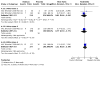
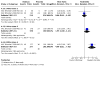
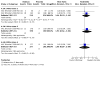


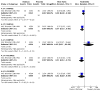
Update of
-
Vaccines for preventing rotavirus diarrhoea: vaccines in use.Cochrane Database Syst Rev. 2019 Oct 28;2019(10):CD008521. doi: 10.1002/14651858.CD008521.pub5. Cochrane Database Syst Rev. 2019. Update in: Cochrane Database Syst Rev. 2021 Nov 17;11:CD008521. doi: 10.1002/14651858.CD008521.pub6. PMID: 31684685 Free PMC article. Updated.
References
References to studies included in this review
RIX Anh 2011‐PHL {published data only}
-
- Anh DD, Carlos CC, Thiem DV, Hutagalung Y, Gatchalian S, Bock HL, et al. Immunogenicity, reactogenicity and safety of the human rotavirus vaccine RIX4414 (Rotarix) oral suspension (liquid formulation) when co-administered with expanded program on immunization (EPI) vaccines in Vietnam and the Philippines in 2006-2007. Vaccine 2011;29(11):2029-36. - PubMed
-
- GlaxoSmithKline[109216-063]. A phase II, randomized, double-blind, placebo-controlled study to evaluate the immunogenicity, reactogenicity and safety of two doses of GlaxoSmithKline (GSK) Biologicals’ oral live attenuated human rotavirus (HRV) liquid vaccine, when given to healthy infants, in Philippines. www.gsk-studyregister.com/study/3204 (accessed 12 December 2018).
-
- NCT00432380. Immunogenicity and safety of two doses of GlaxoSmithKline (GSK) Biologicals' oral live attenuated human rotavirus (HRV) liquid vaccine (GSK 357941A) in healthy infants. clinicaltrials.gov/show/NCT00432380 (first received 7 February 2007).
RIX Anh 2011‐VNM {published data only}
-
- Anh DD, Carlos CC, Thiem DV, Hutagalung Y, Gatchalian S, Bock HL, et al. Immunogenicity, reactogenicity and safety of the human rotavirus vaccine RIX4414 (Rotarix) oral suspension (liquid formulation) when co-administered with expanded program on immunization (EPI) vaccines in Vietnam and the Philippines in 2006-2007. Vaccine 2011;29(11):2029-36. - PubMed
-
- Anh DD, Thiem VD, Hutagalung Y, Bock HL, Suryakiran P, Delem A, et al. Immunogenicity, reactogenicity and safety of the oral live attenuated human rotavirus vaccine RIX4414 (Rotarix™) oral suspension (liquid formulation) in Vietnamese Infants. In: 13th International Congress on Infectious Diseases Abstracts, Poster Presentations; June 19–22, 2008; Kuala Lumpur, Malaysia. 2008.
-
- GlaxoSmithKline[105722-051]. A phase II, randomized, double-blind, placebo-controlled study to evaluate the immunogenicity, reactogenicity and safety of two doses of GlaxoSmithKline (GSK) Biologicals’ oral live attenuated human rotavirus (HRV) liquid vaccine, when given to healthy infants, in Vietnam. www.gsk-studyregister.com/study/3012 (accessed 12 December 2018).
-
- NCT00345956. A placebo-controlled study to evaluate the immunogenicity, reactogenicity and safety of two doses of GSK Bio oral live attenuated human rotavirus (HRV) liquid vaccine, when given to healthy infants, in Vietnam. clinicaltrials.gov/show/NCT00345956 (first received 29 June 2006).
RIX Bernstein 1998‐USA {published data only}
-
- Bernstein DI, Smith VE, Sherwood JR, Schiff GM, Sander DS, DeFeudis D, et al. Safety and immunogenicity of live, attenuated human rotavirus vaccine 89-12. Vaccine 1998;16(4):381-7. - PubMed
RIX Bernstein 1999‐USA {published data only}
-
- Bernstein DI, Sack DA, Reisinger K, Rothstein E, Ward RL. Second-year follow-up evaluation of live, attenuated human rotavirus vaccine 89-12 in healthy infants. Journal of Infectious Diseases 2002;186(10):1487-9. - PubMed
-
- Bernstein DI, Sack DA, Rothstein E, Reisinger K, Smith VE, O'Sullivan D, et al. Efficacy of live, attenuated, human rotavirus vaccine 89-12 in infants: a randomised placebo-controlled trial. Lancet 1999;354(9175):287-90. - PubMed
RIX Colgate 2016‐BGD {published data only}
-
- Colgate ER, Haque R, Dickson DM, Carmolli MP, Mychaleckyj JC, Nayak U, et al. Delayed dosing of oral rotavirus vaccine demonstrates decreased risk of rotavirus gastroenteritis associated with serum zinc: a randomized controlled trial. Clinical Infectious Diseases 2016;63(5):634-41. - PubMed
-
- Kirkpatrick BD, Colgate ER, Mychaleckyj JC, Haque R, Dickson DM, Carmolli MP, et al. The "Performance of Rotavirus and Oral Polio Vaccines in Developing Countries" (PROVIDE) study: description of methods of an interventional study designed to explore complex biologic problems. American Journal of Tropical Medicine and Hygiene 2015;92(4):744-51. - PMC - PubMed
-
- Lee B, Diehl SA, Colgate ER, Dickson DM, Uddin MI, Sharmin S, et al. Lewis antigen and secretor status mediate susceptibility to p-genotype specific rotavirus infections but do not affect rotavirus vaccine performance among infants in Bangladesh. American Journal of Tropical Medicine and Hygiene 2017;97:226.
-
- NCT01375647. Exploration of the biologic basis for underperformance of oral polio and rotavirus vaccines in Bangladesh PROVIDE. clinicaltrials.gov/show/NCT01375647 (first received 17 June 2011).
RIX Dennehy 2005‐NA {published data only}
-
- Dennehy PH, Brady RC, Halperin SA, Ward RL, Alvey JC, Fischer FH Jr, et al. Comparative evaluation of safety and immunogenicity of two dosages of an oral live attenuated human rotavirus vaccine. Pediatric Infectious Disease Journal 2005;24(6):481-8. - PubMed
-
- Dennehy PH. A short report on the highlights of world-wide development of RIX4414: a North American experience comparative evaluation of safety and immunogenicity of two dosages of an oral live attenuated human rotavirus vaccine (RIX4414) in infants in the United States and Canada. Vaccine 2006;24(18):3780-1. - PubMed
-
- GlaxoSmithKline[444563-005]. A phase II, double-blind, randomized, placebo-controlled study of two doses of GlaxoSmithKline Biologicals’ live attenuated human rotavirus (HRV) vaccine at different virus concentrations (10 5.2 and 10 6.4 ffu) in healthy infants (approximately 2 months of age at first dose) following a 0, 2 month schedule and previously uninfected with human rotavirus. www.gsk-studyregister.com/study/6783 (accessed 12 December 2018).
-
- NCT00729001. Study of two doses of GSK Biologicals' live attenuated HRV vaccine (two different formulations) in healthy infants. clinicaltrials.gov/ct2/show/NCT00729001 (accessed 6 August 2008).
RIX GSK[021] 2007‐PAN {published data only}
-
- GlaxoSmithKline[444563-021]. A phase II, double-blind, randomized, placebo-controlled clinical study to assess the immunogenicity and reactogenicity of three doses of a modified vaccine formulation versus GlaxoSmithKline (GSK) Biologicals’ live attenuated human rotavirus (HRV) vaccine when orally administered to healthy infants at 2, 4 and 6 months of age. www.gsk-studyregister.com/study/6789 (accessed 12 December 2018).
RIX GSK[033] 2007‐LA {published data only}
-
- GlaxoSmithKline[444563-033]. A phase III, randomized, double-blind and placebo-controlled study to assess the clinical consistency of three production lots of GSK Biologicals’ HRV vaccine in terms of immunogenicity and safety when given to healthy infants at 2 and 4 months of age. www.gsk-studyregister.com/study/6794 (accessed 12 December 2018).
-
- López P, Galan Herrera JF, Cervantes Y, Costa Clemens SA, Aguirre F, Yarzabal JP. Three consecutive production lots of the human monovalent RIX4414 G1P(8) rotavirus vaccine, Rotarix™ induce a consistent immune response in Latin American infants [poster]. In: 4th World Congress of The World Society for Pediatric Infectious Diseases; 2005 September 01-04; Warsaw, Poland. 2005. [Not available for review]
-
- NCT00757770. Assessment of clinical consistency of three production lots of GSK Biologicals' HRV vaccine. clinicaltrials.gov/ct2/show/NCT00757770 (first received 23 September 2008).
RIX GSK[041] 2007‐KOR {published data only}
-
- GlaxoSmithKline[103478-041]. A phase IIIb, double-blind, randomized, placebo-controlled, multicentre study to assess the immunogenicity, safety and reactogenicity of 2 doses of GlaxoSmithKline (GSK) Biologicals’ oral live attenuated human rotavirus (HRV) vaccine in healthy infants (6-12 weeks of age at first dose) previously uninfected with human rotavirus. www.gsk-studyregister.com/study/2714 (accessed 12 December 2018).
-
- NCT00134732. Assess the immunogenicity, safety & reactogenicity of 2 doses of GSK Biologicals’ oral live attenuated human rotavirus (HRV) vaccine in healthy infants (6-12 weeks of age at first dose) previously uninfected with human rotavirus. clinicaltrials.gov/ct2/show/record/NCT00134732 (first received 25 August 2005).
RIX GSK[101555] 2008‐PHL {published data only}
-
- GlaxoSmithKline[101555]. A phase II, double-blind, randomized, placebo-controlled study to compare the immunogenicity, reactogenicity and safety of 2 different formulations of GlaxoSmithKline (GSK) Biologicals’ live attenuated human rotavirus (HRV) vaccine given as a two-dose primary vaccination in healthy infants previously uninfected with HRV. www.gsk-studyregister.com/study/2632 (accessed 12 December 2018).
RIX Kawamura 2011‐JPN {published data only}
-
- GlaxoSmithKline[107625 (Rota-056)]. Efficacy, safety, reactogenicity and immunogenicity study of the lyophilised formulation of Rotarix vaccine in healthy Japanese infants. www.gsk-studyregister.com/study/3131 (accessed 12 December 2018).
-
- Kawamura N, Tokoeda Y, Mori S, Ohshima M, Okahata H, Ueda D, et al. Efficacy of human rotavirus vaccine RIX4414 in Japanese infants from 2 weeks post dose 2 up to data lock point. In: 28th Meeting of European Society for Paediatric Infectious Diseases (ESPID); 2010 May 04-08; Nice, France. 2010.
-
- Kawamura N, Tokoeda Y, Oshima M, Okahata H, Tsutsumi H, Van Doorn LJ, et al. Efficacy, safety and immunogenicity of RIX4414 in Japanese infants during the first two years of life. Vaccine 2011;29(37):6335-41. - PubMed
-
- NCT00480324. Efficacy, safety, reactogenicity and immunogenicity study of the lyophilised formulation of Rotarix vaccine in healthy Japanese infants. clinicaltrials.gov/show/NCT00480324 (first received 17 November 2010).
RIX Kerdpanich 2010‐THA {published data only}
-
- GlaxoSmithKline[103477-039]. A phase IIIb, partially blind, randomized, placebo-controlled study to asses the effect on immunogenicity of administration of vaccine without buffering agent and to assess heat stability in terms of immunogenicity, reactogenicity and safety of GlaxoSmithKline Biologicals’ oral live attenuated human rotavirus (HRV) vaccine following a 0, 2 month schedule, in healthy infants previously uninfected with human rotavirus. www.gsk-studyregister.com/study/2713 (accessed 12 December 2018).
-
- Kerdpanich A, Chokephaibulkit K, Watanaveeradej V, Vanprapar N, Hutagalung Y, Han HH, et al. Exposure to elevated temperature of 37°C for 7 days does not affect immunogenicity and reactogenicity of RIX4414 [poster]. In: dsRNA Virus Meeting; 2006 October 21-26; Cape Town, South Africa. 2006. [Not available for review]
-
- Kerdpanich A, Chokephaibulkit K, Watanaveeradej V, Vanprapar N, Simasathien S, Phavichitr N, et al. Immunogenicity of a human rotavirus vaccine (RIX4414) after storage at 37 degrees C for seven days. Human Vaccine 2011;7(1):74-80. - PubMed
-
- Kerdpanich A, Chokephaibulkit K, Watanaveeradej V, Vanprapar N, Simasathien S, Phavichitr N, et al. Immunogenicity of a live-attenuated human rotavirus RIX4414 vaccine with or without buffering agent. Human Vaccines 2010;6(3):254-62. - PubMed
-
- NCT00169455. Assess the effect on immunogenicity of administration of vaccine without buffering agent & assess heat stability in terms of immunogenicity, reactogenicity & safety of GSK Biologicals’ oral live attenuated human rotavirus (HRV) vaccine following a 0, 2 m schedule, in healthy infants previously uninfected with human rotavirus. clinicaltrials.gov/show/NCT00169455 (first received 15 September 2005).
RIX Kim 2012‐KOR {published data only}
-
- GlaxoSmithKline[112269-068]. Immunogenicity, reactogenicity and safety study to evaluate two doses of the lyophilised formulation of the human rotavirus (HRV) vaccine when administered to healthy Korean infants previously uninfected with HRV. www.gsk-studyregister.com/study/3589 (accessed 12 December 2018).
-
- Kim JS, Bae CW, Lee KY, Park MS, Choi YY, Kim KN, et al. Immunogenicity, reactogenicity and safety of a human rotavirus vaccine (RIX4414) in Korean infants: a randomized, double-blind, placebo-controlled, phase IV study. Human Vaccines and Immunotherapeutics 2012;8(6):806-12. - PubMed
-
- NCT00969228. Study to evaluate immunogenicity, reactogenicity and safety of Rotarix™ vaccine in Korean infants. clinicaltrials.gov/ct2/show/NCT00969228 (first received 1 September 2009).
RIX Li 2013a‐CHN {published data only}
-
- GlaxoSmithKline[113552-073]. Reactogenicity and safety of a single dose of GlaxoSmithKline (GSK) Biologicals' human rotavirus (HRV) vaccine (444563) in healthy children. www.gsk-studyregister.com/study/3957 (accessed 12 December 2018).
-
- Li RC, Li YP, Mo ZJ, Luo D, Huang T, Kong JL, et al. Reactogenicity and safety of a liquid human rotavirus vaccine (RIX4414) in healthy adults, children and infants in China: randomized, double-blind, placebo-controlled phase I studies. Human Vaccines and Immunotherapeutics 2013;9(8):1638-42. - PMC - PubMed
-
- NCT01086436. Study to evaluate the safety of Rotarix in Chinese children. clinicaltrials.gov/ct2/show/NCT01086436 (first received on 15 March 2010).
RIX Li 2013b‐CHN {published data only}
-
- GlaxoSmithKline[113518-074]. Reactogenicity and safety of two doses of GlaxoSmithKline (GSK) Biologicals’ oral live attenuated liquid human rotavirus (HRV) vaccine 444563, in healthy infants. www.gsk-studyregister.com/study/3947 (accessed 12 December 2018).
-
- Li RC, Li YP, Mo ZJ, Luo D, Huang T, Kong JL, et al. Reactogenicity and safety of a liquid human rotavirus vaccine (RIX4414) in healthy adults, children and infants in China: randomized, double-blind, placebo-controlled phase I studies. Human Vaccines and Immunotherapeutics 2013;9(8):1638-42. - PMC - PubMed
-
- NCT01107587. Study to assess the safety of GSK Biologicals' liquid human rotavirus vaccine in healthy infants. clinicaltrials.gov/ct2/show/NCT01107587 (first received 20 April 2010).
RIX Li 2014‐CHN {published data only}
-
- GlaxoSmithKline[113808-075]. Efficacy, immunogenicity and safety of two doses of GlaxoSmithKline (GSK) Biologicals' oral live attenuated liquid Human Rotavirus (HRV) vaccine (444563), in healthy infants. www.gsk-studyregister.com/study/4036 (accessed 12 December 2018).
-
- NCT01171963. Efficacy, immunogenicity and safety of two doses of GlaxoSmithKline (GSK) Biologicals' oral live attenuated liquid human rotavirus (HRV) vaccine (444563), in healthy infants. clinicaltrials.gov/show/NCT01171963 (first received 29 July 2010).
RIX Madhi 2010‐AF {published data only}
-
- Madhi SA, Cunliffe NA, Steele D, Witte D, Kirsten M, Louw C, et al. Effect of human rotavirus vaccine on severe diarrhea in African infants. New England Journal of Medicine 2010;362(4):289-98. - PubMed
-
- Madhi SA, Kirsten M, Louw C, Bos P, Aspinall S, Bouckenooghe A, et al. Efficacy and immunogenicity of two or three dose rotavirus-vaccine regimen in South African children over two consecutive rotavirus seasons: a randomized, double-blind, placebo-controlled trial. Vaccine 2012;30(Suppl 1):A44-51. - PubMed
-
- NCT00241644. Multi-center study to assess the efficacy, safety and immunogenicity of 2 or 3 doses of GSK Biologicals' oral live attenuated human rotavirus (HRV) vaccine given concomitantly with routine EPI vaccinations in healthy infants. clinicaltrials.gov/show/NCT00241644 (first received 19 October 2005).
-
- NCT00598468. Multi-center study to assess efficacy, safety & immunogenicity of 2 or 3 doses of GSK Biologicals' oral live attenuated human rotavirus (HRV) vaccine given concomitantly with routine EPI vaccinations in healthy infants. clinicaltrials.gov/show/NCT00598468 (first received 19 October 2005).
RIX Madhi 2010‐MWI {published data only}
-
- Madhi SA, Cunliffe NA, Steele D, Witte D, Kirsten M, Louw C, et al. Effect of human rotavirus vaccine on severe diarrhea in African infants. New England Journal of Medicine 2010;362(4):289-98. - PubMed
-
- NCT00241644. Multi-center study to assess the efficacy, safety and immunogenicity of 2 or 3 doses of GSK Biologicals' oral live attenuated human rotavirus (HRV) vaccine given concomitantly with routine EPI vaccinations in healthy infants. clinicaltrials.gov/show/NCT00241644 (first received 19 October 2005).
-
- NCT00598468. Multi-center study to assess efficacy, safety & immunogenicity of 2 or 3 doses of GSK Biologicals' oral live attenuated human rotavirus (HRV) vaccine given concomitantly with routine EPI vaccinations in healthy infants. clinicaltrials.gov/show/NCT00598468 (first received 19 October 2005).
RIX Madhi 2010‐ZAF {published data only}
-
- Madhi SA, Cunliffe NA, Steele D, Witte D, Kirsten M, Louw C, et al. Effect of human rotavirus vaccine on severe diarrhea in African infants. New England Journal of Medicine 2010;362(4):289-98. - PubMed
-
- Madhi SA, Kirsten M, Louw C, Bos P, Aspinall S, Bouckenooghe A, et al. Efficacy and immunogenicity of two or three dose rotavirus-vaccine regimen in South African children over two consecutive rotavirus seasons: a randomized, double-blind, placebo-controlled trial. Vaccine 2012;30(Suppl 1):A44-51. - PubMed
-
- NCT00241644. Multi-center study to assess the efficacy, safety and immunogenicity of 2 or 3 doses of GSK Biologicals' oral live attenuated human rotavirus (HRV) vaccine given concomitantly with routine EPI vaccinations in healthy infants. clinicaltrials.gov/show/NCT00241644 (first received 19 October 2005).
-
- NCT00598468. Multi-center study to assess efficacy, safety & immunogenicity of 2 or 3 doses of GSK Biologicals' oral live attenuated human rotavirus (HRV) vaccine given concomitantly with routine EPI vaccinations in healthy infants. clinicaltrials.gov/show/NCT00598468 (first received 19 October 2005).
RIX Narang 2009‐IND {published data only}
-
- GlaxoSmithKline[103792-044]. A phase IIIb, randomised, multicentre double-blind, placebo-controlled study of the immunogenicity and safety of two doses of GlaxoSmithKline (GSK) Biologicals’ oral live attenuated human rotavirus (HRV) vaccine (RIX4414) as primary dosing in healthy infants in India of approximately 8 weeks of age at the first dose. www.gsk-studyregister.com/study/2723 (accessed 12 December 2018).
-
- Narang A, Bose A, Pandit AN, Dutta P, Kang G, Bhattacharya SK, et al. Immunogenicity, reactogenicity and safety of human rotavirus vaccine (RIX4414) in Indian infants. Human Vaccines 2009;5(6):414-9. - PubMed
-
- NCT00289172. A multicenter study of the immunogenicity & safety of 2 doses of GSK Biologicals’ oral live attenuated human rotavirus vaccine (RIX4414) as primary dosing of healthy infants in India aged approximately 8 wks at the time of the first dose. clinicaltrials.gov/ct2/show/record/NCT00289172 (first received 9 February 2006).
RIX NCT00158756‐RUS {published data only}
-
- GlaxoSmithKline[104021-DTPw CSL-HBVGOD-005]. A phase III, partially blind, randomized study to evaluate the immunogenicity, safety and reactogenicity of GlaxoSmithKline (GSK) Biologicals’ Tritanrix™-HepB and GSK Biologicals Kft’s DTPw-HBV vaccines as compared to concomitant administration of Commonwealth Serum Laboratory’s (CSL’s) DTPw (Triple Antigen™) and GSK Biologicals’ HBV (Engerix™-B), when co-administered with GSK Biologicals’ oral live attenuated human rotavirus (HRV) vaccine, to healthy infants at 3, 4½ and 6 months of age, after a birth dose of hepatitis B vaccine. www.gsk-studyregister.com/study/2753 (accessed 12 December 2018).
-
- NCT00158756. Assess immunogenicity & reactogenicity of 2 formulations of GSK's DTPw-HBV vaccines vs concomitant admn of CSL's DTPw & GSK's HBV vaccine, co-admnd with GSK's rotavirus vaccine, to infants at 3, 4½ & 6 mths, after birth dose of HBV vaccine. clinicaltrials.gov/show/NCT00158756 (first received 12 September 2005).
-
- Tatochenko VK, Romanenko VV, Kharit SM, Smolenov I, LeFevre I, De Clercq N, et al. Co-administration of a human rotavirus vaccine Rix4414 with DTPw-HBv vaccines: immunogenicity and reactogenicity in healthy infants. In: 13th International Congress on Infectious Diseases; June 19–22. 2008; Kuala Lumpur, Malaysia. 2008.
RIX Omenaca 2012‐EU {published data only}
-
- GlaxoSmithKline[106481-054]. Phase IIIb, double blind, randomised, placebo-controlled, multi-country/centre, study to assess safety, reactogenicity & immunogenicity of 2 doses of GSK Biologicals' oral live attenuated Human Rotavirus (HRV) vaccine in pre-term infants. www.gsk-studyregister.com/study/3064 (accessed 12 December 2018).
-
- NCT00420745. Phase IIIb, double blind, randomised, placebo-controlled, multi-country/centre, study to assess safety, reactogenicity & immunogenicity of 2 doses of GSK Biologicals' oral live attenuated human rotavirus (HRV) vaccine in pre-term infants. clinicaltrials.gov/show/NCT00420745 (first received 11 January 2007).
-
- Omenaca F, Sarlangue J, Szenborn L, Nogueira M, Suryakiran PV, Smolenov IV, et al. Safety, reactogenicity and immunogenicity of the human rotavirus vaccine in preterm European infants: a randomized phase IIIb study. Pediatric Infectious Disease Journal 2012;31(5):487-93. - PubMed
RIX Phua 2005‐SGP {published data only}
-
- Emmanuel B, et al. Immunogenicity of an acellular pertussis combination vaccine co-administered with a novel rotavirus vaccine in Singaporean infants. Asian Congress on Pediatric Infectious Diseases (ACPID); 2-4 September 2004; Kota Kinabula, Malaysia 2004. [Not available for review]
-
- Phua KB, et al. Immunogenicity and reactogenicity of two doses of an oral human rotavirus (HRV) vaccine at different concentrations in healthy infants from Singapore. In: 11th Asia Pacific Congress of Pediatrics and the 3rd Asia Pacific Congress of Pediatric Nursing; 2003; Bangkok, Thailand. 2003. [Not available for review]
-
- Phua KB, et al. Intussusception in children: a seven-year experience in Singapore. In: 24th International Congress of Pediatrics (ICP); 2004 August 15-20; Cancun, Mexico. 2004. [Not available for review]
-
- Vesikari T, et al. High efficacy of two doses of Rotarix™ (RIX4414) against rotavirus disease in Europe, Latin-America and Asia. In: Asian Congress on Pediatric Infectious Diseases (ACPID); 2006 March 07-10; Cebu, Philippines. 2006. [Not available for review]
-
- De Vos B, Gillard P, Cheuvart B. RIX4414 vaccine efficacy against rotavirus gastroenteritis due to G2P[4] strain. In: 46th Interscience Conference on Antimicrobial Agents and Chemotherapy (ICAAC); 2006 September 27-30; San Francisco, USA. 2006. [Not available for review]
RIX Phua 2009‐AS {published data only}
-
- Lau YL, Nelson EA, Poon KH, Chan PK, Chiu S, Sung R, et al. Efficacy, safety and immunogenicity of a human rotavirus vaccine (RIX4414) in Hong Kong children up to three years of age: a randomized, controlled trial. Vaccine 2013;31(18):2253-9. - PubMed
-
- NCT00197210. A phase III, double-blind, randomized, placebo-controlled, multi-country and multi-center study to assess the efficacy and safety of two doses of GSK Biologicals' oral live attenuated human rotavirus (HRV) vaccine in healthy infants. clinicaltrials.gov/show/NCT00197210 (first received 20 September 2005).
-
- NCT00329745. A phase III, double-blind, randomized, placebo-controlled, multi-country and multi-center study to assess the efficacy and safety of two doses of GSK Biologicals' oral live attenuated human rotavirus (HRV) vaccine in healthy infants. clinicaltrials.gov/show/NCT00329745 (first received 25 May 2006).
-
- Phua KB, Lim FS, Lau YL, Nelson EA, Huang LM, Quak SH, et al. Rotavirus vaccine RIX4414 efficacy sustained during the third year of life: a randomized clinical trial in an Asian population. Vaccine 2012;30(30):4552-7. - PubMed
-
- Phua KB, Lim FS, Lau YL, Nelson EA, Huang LM, Quak SH, et al. Safety and efficacy of human rotavirus vaccine during the first 2 years of life in Asian infants: randomised, double-blind, controlled study. Vaccine 2009;27(43):5936-41. - PubMed
RIX Rivera 2011‐DOM {published data only}
-
- EUCTR2015-001542-29. Immunization of infants 6-14 weeks of age, with GlaxoSmithKline Biologicals Rotavirus vaccine to explore the existence of transmission of rotavirus vaccine strain between twins in a family. clinicaltrialsregister.eu/ctr-search/trial/2015-001542-29/results (first received 22 June 2015).
-
- NCT00396630. A Phase IIIb, randomized, double-blind, placebo-controlled study to explore the existence of horizontal transmission of the RIX4414 vaccine strain between twins within a family. clinicaltrials.gov/show/NCT00396630 (first received 7 November 2006).
-
- Rivera L, Peña LM, Stainier I, Gillard P, Cheuvart B, Smolenov I, et al. Horizontal transmission of a human rotavirus vaccine strain - a randomized, placebo-controlled study in twins. Vaccine 2011;29(51):9508-13. - PubMed
RIX Ruiz‐Palac 06‐LA/EU {published data only}
-
- Costa Clemens SA, et al. Operational organization of a large scale phase III clinical trial of rotavirus vaccine in multiple sites and countries in Latin America. In: International Congress of Pediatrics (ICP); 2004 August 15-20; Cancun, Mexico. 2004. [Not available for review]
-
- De Vos B, et al. Rotarix™: an effective way to prevent rotavirus diarrhoea and vomiting. In: 9th Congress of the Asian Pan Pacific Society of Paediatric Gastroenterology, Hepatology and Nutrition & 27th Annual Congress of the Malaysian Paediatric Association; 2005 June 16-19; Kuala Lumpur, Malaysia. 2005. [Not available for review]
-
- GlaxoSmithKline[444563-023-pt1]. A phase III, double-blind, randomized, placebo-controlled, multi-country and multi-center study to assess the efficacy, safety and immunogenicity of two doses of GSK Biologicals’ oral live attenuated human rotavirus (HRV) vaccine in healthy infants (efficacy data from visit 1 to visit 4). www.gsk-studyregister.com/study/6791 (accessed 12 December 2018).
-
- GlaxoSmithKline[444563-023-pt2]. A phase III, double-blind, randomized, placebo-controlled, multi-country and multi-center study to assess the efficacy, safety and immunogenicity of two doses of GSK Biologicals’ oral live attenuated human rotavirus (HRV) vaccine in healthy infants (2nd year efficacy from visit 4 to visit 6). www.gsk-studyregister.com/study/6791 (accessed 12 December 2018).
RIX Salinas 2005‐LA {published data only}
-
- Ruiz-Palacios G, Guerrero L, Linhares AC, et al. Efficacy of an oral human rotavirus (HRV) vaccine in preventing diarrhoea due to G1 and non-G1 rotavirus [Presentation]. In: 3rd World Congress of Pediatric Infectious Diseases; 2002 November 19-23; Santiago, Chile. 2002. [Not available for review]
-
- Ruiz-Palacios G, Guerrero ML, Linhares AC, et al. Two-year efficacy of GlaxoSmithKline Biologicals' live attenuated rotavirus vaccine in Latin American children [poster]. In: 24th International Congress of Pediatrics; 2004 August 15-20; Cancun, Mexico. 2004. [Not available for review]
-
- Salinas B, Perez-Schael I, Ruiz-Palacios G, et al. Early protection by GlaxoSmithKline Biologicals' live attenuated rotavirus vaccine in Latin American children [poster]. In: 24th International Congress of Pediatrics; 2004 August 15-20; Cancun, Mexico. 2004. [Not available for review]
-
- Salinas B, Tomat MA, Yarzabal JP, et al. Efficacy of the rotavirus vaccine (RIX4414) among infants in Carabobo State, Venezuela [poster]. In: Asocación Venezolana para el Avance de la Cienca (AsoVAC); 2004; Venezuela. 2004. [Not available for review]
-
- Araujo EC, Clemens SA, Oliveira CS, Justino MC, Rubio P, Gabbay YB, et al. Safety, immunogenicity, and protective efficacy of two doses of RIX4414 live attenuated human rotavirus vaccine in healthy infants. Jornal de Pediatria 2007;83(3):217-24. - PubMed
RIX Steele 2008‐ZAF {published data only}
-
- GlaxoSmithKline[444563-014]. A phase II, double-blind before the 2002 rotavirus season and single blind with respect to OPV after, randomised, placebo-controlled study of the safety, reactogenicity and immunogenicity of two doses of GSK Biologicals’ oral live attenuated human rotavirus (HRV) vaccine (RIX4414 at 105 ffu) co-administered with either oral polio vaccine (OPV) or inactivated polio vaccine (IPV) in healthy infants (approximately 5-10 weeks old) in South Africa. www.gsk-studyregister.com/study/6787 (accessed 12 December 2018).
-
- ISRCTN86632774. A phase II, double blind randomised, placebo controlled study to assess the safety reactogenicity and immunogenicity of three doses of GSK Biologicals (South Africa). controlled-trials.com/ISRCTN86632774 (first received 25 November 2005).
-
- NCT00346892. Reactogenicity & immunogenicity study of two doses of GSK Biologicals’ oral live attenuated HRV vaccine co-administered with either OPV or IPV in healthy infants (approximately 5-10 weeks old) in South Africa. clinicaltrials.gov/show/NCT00346892 (first received 30 June 2006).
-
- Steele AD, De Vos B, Tumbo J, Reynders J, Scholtz F, Bos P, et al. Co-administration study in South African infants of a live-attenuated oral human rotavirus vaccine (RIX4414) and poliovirus vaccines. Vaccine 2010 ;28(39):6542-8. - PubMed
-
- Steele AD, Tumbo J, Armah G, Reynders J, Scholtz F, Bos P, et al. Immunogenicity and reactogenicity of a new live attenuated oral rotavirus vaccine (RIX4414) when administered concurrently with poliovirus vaccines in African infants. In: 24th International Congress of Pediatrics; 2004 August 15-20; Cancun, Mexico. 2004. [Not available for review]
RIX Steele 2010a‐ZAF {published data only}
-
- EUCTR2015-001484-39. A phase II study to assess the safety and immunogenicity of GlaxoSmithKline Biologicals rotavirus vaccine, RIX4414 when administered to HIV infected infants in South Africa. www.clinicaltrialsregister.eu/ctr-search/trial/2015-001484-39/results (first received 11 June 2015).
-
- GlaxoSmithKline[444563-022]. A phase II, double-blind, randomized, placebo-controlled study to assess the safety, reactogenicity and immunogenicity of three doses of GlaxoSmithKline (GSK) Biologicals’ oral live attenuated human rotavirus (HRV) vaccine. www.gsk-studyregister.com/study/6790 (accessed 12 December 2018).
-
- ISRCTN11877362. A phase II, double-blind, randomised, placebo-controlled study to assess the safety, reactogenicity and immunogenicity of three doses of GlaxoSmithKline (GSK) Biologicals’ oral live attenuated human rotavirus (HRV) vaccine (RIX4414 at 106.5 CCID50) administered to human immunodeficiency virus (HIV) infected infants at 6, 10 and 14 weeks of age in South Africa. www.controlled-trials.com/ISRCTN11877362 (first received 25 November 2005).
-
- NCT00263666. A study of safety, reactogenicity and immunogenicity of HRV vaccine in HIV infected infants in South Africa. clinicaltrials.gov/ct2/show/results/NCT00263666 (first received on 9 December 2005).
-
- Steele AD, Madhi SA, Louw CE, Bos P, Tumbo JM, Werner CM, et al. Safety, reactogenicity, and immunogenicity of human rotavirus vaccine RIX4414 in human immunodeficiency virus-positive infants in South Africa. Pediatric Infectious Diseases Journal 2011;30(2):125-30. - PubMed
RIX Steele 2010b‐ZAF {published data only}
-
- GlaxoSmithKline[444563-013]. A phase II, double-blind before the 2002 rotavirus season and single blind with respect to OPV after, randomised, placebo-controlled study of the safety, reactogenicity and immunogenicity of two doses of GSK Biologicals’ oral live attenuated human rotavirus (HRV) vaccine (RIX4414 at 105 ffu) co-administered with either oral polio vaccine (OPV) or inactivated polio vaccine (IPV) in healthy infants (approximately 5-10 weeks old) in South Africa. www.gsk-studyregister.com/study/6786 (accessed 12 December 2018).
-
- ISRCTN37373664. A double blind, randomised placebo controlled study of the safety, reactogenicity and immunogenicity of two doses of orally administered human rotavirus vaccine (RIX4414) in healthy infants in South Africa. controlled-trials.com/ISRCTN37373664 (first received 25 November 2005).
-
- NCT00383903. A study of the safety, reactogenicity and immunogenicity of 2 or 3 doses of GSK Biologicals’ oral live attenuated human rotavirus (HRV) vaccine in healthy infants (approximately 5-10 weeks old) in South Africa. clinicaltrials.gov/show/NCT00383903 (first received 3 October 2006).
-
- Steele AD, Reynders J, Scholtz F, Bos P, De Beer MC, Tumbo J, et al. Comparison of 2 different regimens for reactogenicity, safety, and immunogenicity of the live attenuated oral rotavirus vaccine RIX4414 coadministered with oral polio vaccine in South African infants. Journal of Infectious Diseases 2010;202(Suppl):S93-100. - PubMed
RIX Tregnaghi 2011‐LA {published data only}
-
- GlaxoSmithKline[444563-024]. A phase III, double-blind, randomized, placebo-controlled, multi-country and multi-center study to assess the efficacy, immunogenicity and safety of two doses of GSK Biologicals’ oral live attenuated human rotavirus (HRV) vaccine given concomitantly with routine EPI vaccinations including OPV in healthy infants. www.gsk-studyregister.com/study/6792 (accessed 12 December 2018).
-
- Gonzalez Ayala S, Rivera L, Rivera-Medina DM, Lopez P, Valencia A, De León T, et al. Co-administration with rotavirus vaccine rix4414 (Rotarix™) does not interfere with the immunogenicity of oral polio vaccine (OPV) [poster]. In: World Society for Pediatric Infectious Diseases (WSPID); 2007 November 15-18; Bangkok, Thailand. 2007. [Not available for review]
-
- Tregnaghi MW, Abate HJ, Valencia A, Lopez P, Da Silveira TR, Rivera L, et al. Human rotavirus vaccine is highly efficacious when coadministered with routine expanded program of immunization vaccines including oral poliovirus vaccine in Latin America. Pediatric Infectious Disease Journal 2011;30(6):e103-e8. - PubMed
RIX Vesikari 2004a‐FIN {published data only}
-
- GlaxoSmithKline[444563-003]. A phase II, double-blind, randomized, placebo-controlled, dose-escalating, stepwise study to assess safety, reactogenicity and immunogenicity of GlaxoSmithKline Biologicals’ live attenuated human rotavirus (HRV) vaccine in healthy infants previously uninfected with human rotavirus. www.gsk-studyregister.com/study/6781 (accessed 12 December 2018).
-
- Vesikari T, Karvonen A, Korhonen T, Espo M, Lebacq E, Forster J, et al. Safety and immunogenicity of RIX4414 live attenuated human rotavirus vaccine in adults, toddlers and previously uninfected infants. Vaccine 2004;22(21-2):2836-42. - PubMed
RIX Vesikari 2004b‐FIN {published data only}
-
- De Vos B, Vesikari T, Linhares AC, Salinas B, Perez-Schael I, Ruiz-Palacios GM, et al. A rotavirus vaccine for prophylaxis of infants against rotavirus gastroenteritis. Pediatric Infectious Disease Journal 2004;23(10 Suppl):179-82. - PubMed
-
- GlaxoSmithKline[444563-004]. A phase IIb, double-blind, randomized, placebo-controlled study to assess the efficacy, immunogenicity, reactogenicity and safety of two doses of GSK Biologicals’ oral live attenuated human rotavirus (HRV) vaccine in healthy infants approximately 2 months of age and previously uninfected with HRV [Results for the first efficacy period (starting from 2 weeks after dose 2 until the end of the first RV season following vaccination)]. www.gsk-studyregister.com/study/6782 (accessed 12 December 2018).
-
- GlaxoSmithKline[444563-004-Annex]. A phase IIb, double-blind, randomized, placebo-controlled study to assess the efficacy, immunogenicity, reactogenicity and safety of two doses of GSK Biologicals’ oral live attenuated human rotavirus (HRV) vaccine in healthy infants approximately 2 months of age and previously uninfected with HRV [This summary presents results for the second efficacy period (from the end of the first rotavirus season post-vaccination until the end of the second rotavirus season) and for the two consecutive rotavirus seasons]. www.gsk-studyregister.com/study/6782 (accessed 12 December 2018).
-
- NCT00425737. A study to assess the efficacy, immunogenicity and safety of two doses of oral live attenuated human rotavirus (HRV) vaccine (Rotarix) in healthy infants. clinicaltrials.gov/show/NCT00425737 (first received 23 January 2007).
-
- Vesikari T, Karvonen A, Espo M, Korhonen T, Delem A, De Vos B. Efficacy evaluation of an oral human rotavirus (HRV) vaccine in previously uninfected Finnish infants. In: 42nd Interscience Conference on Antimicrobial Agents and Chemotherapy; 2002 September 27-30; San Diego, California. 2002. [Not available for review]
RIX Vesikari 2007a‐EU {published data only}
-
- Vesikari T, et al. Human rotavirus vaccine Rotarix is highly efficacious in Europe. In: 24th Annual Meeting of the European Society for Paediatric Infectious Diseases (ESPID); 2006 June 15-18; Basel, Switzerland. 2006. [Not available for review]
-
- Vesikari T, et al. Rotarix, an oral human Rotavirus vaccine, is highly immunogenic in healthy infants from 6 European countries. In: 24th Annual Meeting of the European Society for Paediatric Infectious Diseases (ESPID); 2006 June 15-18; Basel, Switzerland. 2006. [Not available for review]
-
- GlaxoSmithKline[102247-036]. A phase IIIb, double-blind, randomized, placebo-controlled, multi-country and multi-center study to assess the efficacy, safety and immunogenicity of two doses of GlaxoSmithKline (GSK) Biologicals’ oral live attenuated human rotavirus (HRV) vaccine in healthy infants in co-administration with specific childhood vaccinations [This summary presents results from the first efficacy period] [102247-036]. www.gsk-studyregister.com/study/2669 (accessed 12 December 2018).
-
- GlaxoSmithKline[102247-036-Annex]. A phase IIIb, double-blind, randomized, placebo-controlled, multi-country and multi-center study to assess the efficacy, safety and immunogenicity of two doses of GlaxoSmithKline (GSK) Biologicals’ oral live attenuated human rotavirus (HRV) vaccine in healthy infants in co-administration with specific childhood vaccinations [This summary presents results for the second and combined efficacy periods]. www.gsk-studyregister.com/study/2669 (accessed 12 December 2018).
-
- GlaxoSmithKline[102247-036-Yr3]. A phase IIIb, double-blind, randomized, placebo-controlled, multi-country and multi-center study to assess the efficacy, safety and immunogenicity of two doses of GlaxoSmithKline (GSK) Biologicals’ oral live attenuated human rotavirus (HRV) vaccine in healthy infants in co-administration with specific childhood vaccinations [A phase IIIb open study to assess the long-term efficacy and safety of GlaxoSmithKline (GSK) Biologicals’ oral live attenuated human rotavirus (HRV) vaccine approximately three years after vaccination in healthy infants aged 6-12 weeks at the time of first vaccination in the Rota-036 study (eTrack No.102247) in Finland]. www.gsk-studyregister.com/study/2669 (accessed 12 December 2018).
RIX Vesikari 2011‐FIN {published data only}
-
- Vesikari T, et al. Immunogenicity of liquid formulation of the oral live attenuated human rotavirus vaccine (Rotarix™) [poster]. Sociedad Latinoamericana de Infectología Pediátrica (SLIPE). San Jose, Costa Rica 8-11 May 2007. [Not available for review]
-
- GlaxoSmithKline[104480-048]. A phase II, double-blind, randomized, placebo controlled study to compare the immunogenicity, reactogenicity and safety of two different formulations of GlaxoSmithKline (GSK) Biologicals’ live attenuated human rotavirus (HRV) vaccine given as a two-dose primary vaccination in healthy infants previously uninfected with HRV. www.gsk-studyregister.com/study/2783 (accessed 12 December 2018).
-
- NCT00137930. Compare the immunogenicity, reactogenicity & safety of 2 different formulations of GSK Biologicals’ live attenuated human rotavirus (HRV) vaccine given as a two-dose primary vaccination in healthy infants previously uninfected with HRV. clinicaltrials.gov/ct2/show/record/NCT00137930 (first received 30 August 2005).
-
- Vesikari T, Karvonen A, Bouckenooghe A, Suryakiran PV, Smolenov I, Han HH. Immunogenicity, reactogenicity and safety of the human rotavirus vaccine RIX4414 oral suspension (liquid formulation) in Finnish infants. Vaccine 2011;29(11):2079-84. - PubMed
RIX Ward 2006‐USA {published data only}
-
- Ward RL, Kirkwood CD, Sander DS, Smith VE, Shao M, Bean JA, et al. Reductions in cross-neutralizing antibody responses in infants after attenuation of the human rotavirus vaccine candidate 89-12. Journal of Infectious Diseases 2006;194(12):1729-36. - PubMed
RIX Zaman 2009‐BGD {published data only}
-
- GlaxoSmithKline[103992-045]. A phase II, randomised, double-blind, placebo-controlled study to evaluate the immunogenicity, reactogenicity and safety of two doses of GSK Biologicals’ oral live attenuated human rotavirus (HRV) vaccine (RIX4414 at 106.5 CCID50) when given concomitantly with OPV versus when given alone (HRV vaccine dose given 15 days after the OPV dose) in healthy infants in Bangladesh. www.gsk-studyregister.com/study/2748 (accessed 12 December 2018).
-
- NCT00139334. Evaluate immunogenicity, reactogenicity & safety of 2 doses of GSK Biologicals’ oral live attenuated HRV vaccine (RIX4414 at 106.5 CCID50) when given concomitantly with OPV versus given alone (HRV vaccine dose given 15 days after the OPV dose) in healthy infants in Bangladesh. clinicaltrials.gov/show/NCT00139334 (first received 31 August 2005).
-
- Zaman K, Sack DA, Yunus M, Arifeen SE, Podder G, Azim T, et al, Bangladesh Rotavirus Vaccine study group. Successful co-administration of a human rotavirus and oral poliovirus vaccines in Bangladeshi infants in a 2-dose schedule at 12 and 16 weeks of age. Vaccine 2009;27(9):1333-9. - PubMed
RIX Zaman 2017‐BGD {published data only}
SIIL Isanaka 2017‐NER {published and unpublished data}
-
- Coldiron ME, Guindo O, Makarimi R, Soumana I, Matar Seck A, Garba S, et al. Safety of a heat-stable rotavirus vaccine among children in Niger: data from a phase 3, randomized, double-blind, placebo-controlled trial. Vaccine 2018;36(25):3674-80. - PubMed
-
- Isanaka S, Djibo A, Grais RF. Heat-stable oral rotavirus vaccine. New England Journal of Medicine 2017;377(3):302. - PubMed
-
- Isanaka S, Guindo O, Langendorf C, Grais R, ROSE Trial Study Team. Efficacy and safety of a low-cost, heat-stable oral roatvirus vaccine agains severe rotavirus gastroenteritis in Niger. American Journal of Tropical Medicine and Hygiene 2017;95(Suppl 5):242.
-
- Isanaka S, Guindo O, Langendorf C, Matar Seck A, Plikaytis BD, Sayinzoga-Makombe N, et al. Efficacy of a low-cost, heat-stable oral Rotavirus vaccine in Niger. New England Journal of Medicine 2017;376(12):1121-30. - PubMed
-
- Isanaka S, Langendorf C, McNeal MM, Meyer N, Plikaytis B, Garba S, et al. Rotavirus vaccine efficacy up to 2 years of age and against diverse circulating rotavirus strains in Niger: a randomized controlled clinical trial (unpublished manuscript received via email correspondence from Rebecca Grais to Nicholas Henschke on 19 August 2020). data on file.
SIIL Kulkarni 2017‐IND {published and unpublished data}
-
- CTRI/2013/05/003667. A clinical trial to study the effect and safety of Rotavirus vaccine against severe Rotavirus gastroenteritis in healthy Indian Infants. www.ctri.nic.in/Clinicaltrials/pdf_generate.php?trialid=5518&EncHid=... (first received 23 May 2013).
-
- NCT02133690. A clinical trial to study the effect and safety of Rotavirus vaccine against severe rotavirus gastroenteritis in healthy Indian infants. clinicaltrials.gov/ct2/show/NCT02133690 (first received 6 May 2014).
SIIL Zade 2014‐INDa {published data only}
-
- CTRI/2009/091/000821. A randomized, double-blind, placebo controlled study to assess the safety and tolerability of rotaVac vaccine (live attenuated bovine-human (UK) reassortant pentavalent rotavirus vaccine). ctri.nic.in/Clinicaltrials/pdf_generate.php?trialid=987&EncHid=&... (first received 15 October 2009).
SIIL Zade 2014‐INDb {published data only}
-
- CTRI/2009/091/000821. A randomized, double-blind, placebo controlled study to assess the safety and tolerability of RotaVac vaccine (live attenuated bovine-human (UK) reassortant pentavalent rotavirus vaccine). ctri.nic.in/Clinicaltrials/pdf_generate.php?trialid=987&EncHid=&... (first received 15 October 2009).
SIIL Zade 2014‐INDc {published data only}
-
- CTRI/2010/091/003064. A randomized, double-blind, placebo controlled study to assess safety and tolerability of RotaVac vaccine (live attenuated bovine-human (UK) reassortant pentavalent rotavirus vaccine). ctri.nic.in/Clinicaltrials/pdf_generate.php?trialid=2458&EncHid=&... (first received 4 January 2011).
TEQ Armah 2010‐AF {published data only}
-
- Armah GE, Sow SO, Breiman RF, Dallas MJ, Tapia MD, Feikin DR, et al. Efficacy of pentavalent rotavirus vaccine against severe rotavirus gastroenteritis in infants in developing countries in sub-Saharan Africa: a randomised, double-blind, placebo-controlled trial. Lancet 2010;376(9741):606-14. - PubMed
-
- Armah GE, Breiman RF, Tapia MD, Dallas MJ, Neuzil KM, Binka FN, et al. Immunogenicity of the pentavalent rotavirus vaccine in African infants. Vaccine 2012;30(Suppl 1):A86-93. - PubMed
-
- Breiman RF, Zaman K, Armah G, Sow SO, Anh DD, Victor JC, et al. Analyses of health outcomes from the 5 sites participating in the Africa and Asia clinical efficacy trials of the oral pentavalent rotavirus vaccine. Vaccine 2012;30(Suppl 1):A24-9. - PubMed
-
- Gruber JF, Hille DA, Liu GF, Kaplan SS, Nelson M, Goveia MG, et al. Heterogeneity of rotavirus vaccine efficacy among infants in developing countries. Pediatric Infectious Disease Journal 2017;36(1):72-8. - PubMed
TEQ Armah 2010‐GHA {published data only}
-
- Armah GE, Sow SO, Breiman RF, Dallas MJ, Tapia MD, Feikin DR, et al. Efficacy of pentavalent rotavirus vaccine against severe rotavirus gastroenteritis in infants in developing countries in sub-Saharan Africa: a randomised, double-blind, placebo-controlled trial. Lancet 2010;376(9741):606-14. - PubMed
-
- Tapia MD, Armah G, Breiman RF, Dallas MJ, Lewis KD, Sow SO, et al. Secondary efficacy endpoints of the pentavalent rotavirus vaccine against gastroenteritis in sub-Saharan Africa. Vaccine 2012;30(Suppl 1):A79-85. - PubMed
TEQ Armah 2010‐KEN {published data only}
-
- Armah GE, Sow SO, Breiman RF, Dallas MJ, Tapia MD, Feikin DR, et al. Efficacy of pentavalent rotavirus vaccine against severe rotavirus gastroenteritis in infants in developing countries in sub-Saharan Africa: a randomised, double-blind, placebo-controlled trial. Lancet 2010;376(9741):606-14. - PubMed
-
- Feikin DR, Laserson KF, Ojwando J, Nyambane G, Ssempijja V, Audi A, et al. Efficacy of pentavalent rotavirus vaccine in a high HIV prevalence population in Kenya. Vaccine 2012;30(Suppl 1):A52-60. - PubMed
-
- Laserson KF, Nyakundi D, Feikin DR, Nyambane G, Cook E, Oyieko J, et al. Safety of the pentavalent rotavirus vaccine (PRV), RotaTeq((R)), in Kenya, including among HIV-infected and HIV-exposed infants. Vaccine 2012;30(Suppl 1):A61-70. - PubMed
-
- Tapia MD, Armah G, Breiman RF, Dallas MJ, Lewis KD, Sow SO, et al. Secondary efficacy endpoints of the pentavalent rotavirus vaccine against gastroenteritis in sub-Saharan Africa. Vaccine 2012;30(Suppl 1):A79-85. - PubMed
TEQ Armah 2010‐MLI {published data only}
-
- Armah GE, Sow SO, Breiman RF, Dallas MJ, Tapia MD, Feikin DR, et al. Efficacy of pentavalent rotavirus vaccine against severe rotavirus gastroenteritis in infants in developing countries in sub-Saharan Africa: a randomised, double-blind, placebo-controlled trial. Lancet 2010;376(9741):606-14. - PubMed
-
- Sow SO, Tapia M, Haidara FC, Ciarlet M, Diallo F, Kodio M, et al. Efficacy of the oral pentavalent rotavirus vaccine in Mali. Vaccine 2012;30(Suppl 1):A71-8. - PubMed
-
- Tapia MD, Armah G, Breiman RF, Dallas MJ, Lewis KD, Sow SO, et al. Secondary efficacy endpoints of the pentavalent rotavirus vaccine against gastroenteritis in sub-Saharan Africa. Vaccine 2012;30(Suppl 1):A79-85. - PubMed
TEQ Block 2007‐EU/USA {published data only}
-
- Block SL, Vesikari T, Goveia MG, Rivers SB, Adeyi BA, Dallas MJ, et al. Efficacy, immunogenicity, and safety of a pentavalent human-bovine (WC3) reassortant rotavirus vaccine at the end of shelf life. Pediatrics 2007;119(1):11-8. - PubMed
-
- Merck[PN-007]. Study of the efficacy, safety, and immunogenicity of RotaTeq™ at expiry potency NCT00092443 (PN 007). www.clinicalstudyresults.org/drugdetails/?indication_id=523&sort=c.c... (accessed prior to 19 October 2021).
-
- NCT00092443. Study of the efficacy, safety, and immunogenicity of V260 at expiry. clinicaltrials.gov/ct2/show/NCT00092443 (first received 27 September 2004). [Trial registration document]
TEQ Ciarlet 2009‐EU {published and unpublished data}
-
- Ciarlet M, He S, Lai S, Petrecz M, Yuan G, Liu GF, et al. Concomitant use of the 3-dose oral pentavalent rotavirus vaccine with a 3-dose primary vaccination course of a diphtheria-tetanus-acellular pertussis-hepatitis B-inactivated polio-Haemophilus influenzae type b vaccine: immunogenicity and reactogenicity. Pediatric Infectious Disease Journal 2009;28(3):177-81. - PubMed
-
- Merck[PN-010]. Safety and immunogenicity of concomitant use of RotaTeq™ and INFANRIX™ hexa in healthy infants NCT00258154 (PN 010) [Merck & Co. Inc. Study Synopsis]. clinicalstudyresults.org/drugdetails/?indication_id=1101&sort=c.comp... (accessed prior to 19 October 2021).
-
- NCT00258154. Safety and immunogenicity of concomitant use of V260 and INFANRIX(Tm) hexa in healthy infants. clinicaltrials.gov/show/NCT00258154 (first received 24 November 2005). [Trial registration document (no data for review)]
TEQ Clark 2003‐USA {published and unpublished data}
-
- Clark HF, Burke CJ, Volkin DB, Offit P, Ward RL, Bresee JS, et al. Safety, immunogenicity and efficacy in healthy infants of G1 and G2 human reassortant rotavirus vaccine in a new stabilizer/buffer liquid formulation. Pediatric Infectious Disease Journal 2003;22(10):914-20. - PubMed
TEQ Clark 2004‐USA {published and unpublished data}
-
- Clark H, White C, Offit P, Stinson D, Eiden J, Weaver S, et al. Preliminary evaluation of safety and efficacy of quadrivalent human-bovine reassortant rotavirus vaccine [abstract]. Pediatric Research 1995;37:172A. [No data for review]
-
- Clark HF, Bernstein DI, Dennehy PH, Offit P, Pichichero M, Treanor J, et al. Safety, efficacy, and immunogenicity of a live, quadrivalent human-bovine reassortant rotavirus vaccine in healthy infants. Journal of Pediatrics 2004;144(2):184-90. - PubMed
-
- Clark HF, Offit PA, Ellis RW, Eiden JJ, Krah D, Shaw AR, et al. The development of multivalent bovine rotavirus (strain WC3) reassortant vaccine for infants. Journal of Infectious Diseases 1996;174(Suppl 1):73-80. [No data for review] - PubMed
-
- Ward RL, Bernstein DI, Smith VE, Sander DS, Shaw A, Eiden JJ, et al. Rotavirus immunoglobulin a responses stimulated by each of 3 doses of a quadrivalent human/bovine reassortant rotavirus vaccine. Journal of Infectious Diseases 2004;189(12):2290-3. - PubMed
TEQ Dhingra 2014‐IND {published data only}
-
- CTRI/2012/07/002820. A study to evaluate safety of Rotavirus vaccine in healthy adult volunteers followed by safety, tolerability and immunogenicity evaluation in healthy infants. ctri.nic.in/Clinicaltrials/pmaindet2.php?trialid=4929&EncHid=&us... (first received 23 July 2012).
-
- Dhingra MS, Kundu R, Gupta M, Kanungo S, Ganguly N, Singh MP, et al. Evaluation of safety and immunogenicity of a live attenuated tetravalent (G1-G4) Bovine-Human Reassortant Rotavirus vaccine (BRV-TV) in healthy Indian adults and infants. Vaccine 2014;32(Suppl 1):A117-23. - PubMed
TEQ Iwata 2013‐JPN {published and unpublished data}
-
- NCT00718237. A phase III randomized, placebo-controlled clinical trial to study the efficacy and safety of V260 in healthy infants in Japan. clinicaltrials.gov/ct2/show/record/NCT00718237 (first received 16 July 2008).
TEQ Kim 2008‐KOR {published and unpublished data}
-
- Kim DS, Lee TJ, Kang JH, Kim JH, Lee JH, Ma SH, et al. Immunogenicity and safety of a pentavalent human-bovine (WC3) reassortant rotavirus vaccine in healthy infants in Korea. Pediatric Infectious Disease Journal 2008;27(2):177-8. - PubMed
-
- Merck[PN-013]. Immunogenicity and safety of RotaTeq® in healthy infants in Korea - NCT00166517 (PN 013). clinicalstudyresults.org/drugdetails/?indication_id=523&sort=c.compa... (accessed prior to 19 October 2021).
-
- NCT00166517. Immunogenicity and safety of V260 in healthy infants in Korea. clinicaltrials.gov/show/NCT00166517 (first received 14 September 2005). [Trial registration document (no data for review)]
TEQ Lawrence 2012‐CHN {published and unpublished data}
-
- Lawrence J, He S, Hille D, Shen C, Kuter B, Schodel F, et al. A study of RotaTeqTM (pentavalent rotavirus vaccine) in Chinese healthy adults, children and infants. International Journal of Infectious Diseases 2012;16(1):e307.
-
- NCT00953056. A study of V260 in healthy Chinese adults, children and infants. clinicaltrials.gov/ct2/show/study/NCT00953056 (first received 4 August 2009).
TEQ Levin 2017‐AF {published data only}
-
- NCT00880698. Safety and immunogenicity of a live, attenuated rotavirus (RotaTeqTM) in HIV-1 infected and uninfected children born to HIV-1-infected mothers. clinicaltrials.gov/ct2/show/study/NCT00880698 (first received 14 April 2009).
-
- Uprety P, Lindsey J, Levin M, Rainwater-Lovett K, Ziemniak C, Kaplan S, et al. Enhanced inflammation and rotavirus vaccine responses in perinatal HIV-1 infection. In: Topics in Antiviral Medicine; 23rd Conference on Retroviruses and Opportunistic Infections, CROI; 2016, USA. Vol. 24(E-1). 2016:347.
TEQ Merck[009] 2005‐USA {published and unpublished data}
-
- Merck[PN-009]. Protocol 009 - Comparison of the immunogenicity and safety of three consistency lots of RotaTeq™ in healthy infants (NCT00092456). clinicalstudyresults.org/drugdetails/?indication_id=523&sort=c.compa... (accessed prior to 19 October 2021).
-
- NCT00092456. Comparison of the immunogenicity and safety of three consistency lots of V260 in healthy infants. clinicaltrials.gov/ct2/show/record/NCT00092456 (first received 27 September 2004). [Trial registration document (no data for review)]
TEQ Mo 2017‐CHN {published data only}
-
- Mo Z, Mo Y, Li M, Tao J, Yang X, Kong J, et al. Efficacy and safety of a pentavalent live human-bovine reassortant rotavirus vaccine (RV5) in healthy Chinese infants: a randomized, double-blind, placebo-controlled trial. Vaccine 2017;35(43):5897-904. - PubMed
-
- NCT02062385. Efficacy, safety, and immunogenicity of V260 in healthy Chinese infants (V260-024). clinicaltrials.gov/show/NCT02062385 (first received 13 February 2014).
TEQ Vesikari 2006a‐FIN {published and unpublished data}
-
- Vesikari T, Clark HF, Offit P, Schodel F, Dallas M, Heaton P, et al. The effect of dose and composition of a pentavalent rotavirus reassortant vaccine [RotaTeq (R)] in safety, efficacy, and immunogenicity in healthy infants. Pediatric Research 2003;53(4 Suppl):307A.
-
- Vesikari T, Clark HF, Offit PA, Dallas MJ, DiStefano DJ, Goveia MG, et al. Effects of the potency and composition of the multivalent human-bovine (WC3) reassortant rotavirus vaccine on efficacy, safety and immunogenicity in healthy infants. Vaccine 2006;24(22):4821-9. - PubMed
TEQ Vesikari 2006b‐INT {published and unpublished data}
-
- Chang CC, Chang MH, Lin TY, Lee HC, Hsieh WS, Lee PI. Experience of pentavalent human-bovine reassortant rotavirus vaccine among healthy infants in Taiwan. Journal of the Formosan Medical Association 2009;108(4):280-5. - PubMed
-
- Christie CD, Duncan ND, Thame KA, Onorato MT, Smith HD, Malcolm LG, et al. Pentavalent rotavirus vaccine in developing countries: safety and health care resource utilization. Pediatrics 2010;126(6):e1499-506. - PubMed
-
- Dennehy PH, Goveia MG, Dallas MJ, Heaton PM. The integrated phase III safety profile of the pentavalent human-bovine (WC3) reassortant rotavirus vaccine. International Journal of Infectious Diseases 2007;11(Suppl 2):36-42. [No data available for review] - PubMed
-
- Goveia MG, DiNubile MJ, Dallas MJ, Heaton PM, Kuter BJ, REST Study Team. Efficacy of pentavalent human-bovine (WC3) reassortant rotavirus vaccine based on breastfeeding frequency. Pediatric Infectious Disease Journal 2008;27(7):656-8. - PubMed
-
- Goveia MG, Rodriguez ZM, Dallas MJ, Itzler RF, Boslego JW, Heaton PM, et al. Safety and efficacy of the pentavalent human-bovine (WC3) reassortant rotavirus vaccine in healthy premature infants. Pediatric Infectious Disease Journal 2007;26(12):1099-104. [No data available for review] - PubMed
TEQ Zaman 2010‐AS {published data only}
-
- Breiman RF, Zaman K, Armah G, Sow SO, Anh DD, Victor JC, et al. Analyses of health outcomes from the 5 sites participating in the Africa and Asia clinical efficacy trials of the oral pentavalent rotavirus vaccine. Vaccine 2012;30(Suppl 1):A24-9. - PubMed
-
- Gruber JF, Hille DA, Liu GF, Kaplan SS, Nelson M, Goveia MG, et al. Heterogeneity of rotavirus vaccine efficacy among infants in developing countries. Pediatric Infectious Disease Journal 2017;36(1):72-8. - PubMed
-
- NCT00362648. Efficacy, safety, and immunogenicity of RotaTeqTM among infants in Asia and Africa. clinicaltrials.gov/ct2/show/record/NCT00362648 (first received 8 August 2006).
-
- Shin S, Anh DD, Zaman K, Yunus M, Mai le TP, Thiem VD, et al. Immunogenicity of the pentavalent rotavirus vaccine among infants in two developing countries in Asia, Bangladesh and Vietnam. Vaccine 2012;30(Suppl 1):A106-13. - PubMed
-
- Zaman K, Dang DA, Victor JC, Shin S, Yunus M, Dallas MJ, et al. Efficacy of pentavalent rotavirus vaccine against severe rotavirus gastroenteritis in infants in developing countries in Asia: a randomised, double-blind, placebo-controlled trial. Lancet 2010;376(9741):615-23. - PubMed
TEQ Zaman 2010‐BGD {published data only}
-
- Feller AJ, Zaman K, Lewis KD, Hossain I, Yunus M, Sack DA. Malnutrition levels among vaccinated and unvaccinated children between 2 and 3 years of age following enrollment in a randomized clinical trial with the pentavalent rotavirus vaccine (PRV) in Bangladesh. Vaccine 2012;30(Suppl 1):A101-5. - PubMed
-
- Zaman K, Dang DA, Victor JC, Shin S, Yunus M, Dallas MJ, et al. Efficacy of pentavalent rotavirus vaccine against severe rotavirus gastroenteritis in infants in developing countries in Asia: a randomised, double-blind, placebo-controlled trial. Lancet 2010;376(9741):615-23. - PubMed
-
- Zaman K, Yunus M, Arifeen SE, Azim T, Faruque AS, Huq E, et al. Methodology and lessons-learned from the efficacy clinical trial of the pentavalent rotavirus vaccine in Bangladesh. Vaccine 2012;30(Suppl 1):A94-100. - PubMed
TEQ Zaman 2010‐VNM {published data only}
-
- Zaman K, Dang DA, Victor JC, Shin S, Yunus M, Dallas MJ, et al. Efficacy of pentavalent rotavirus vaccine against severe rotavirus gastroenteritis in infants in developing countries in Asia: a randomised, double-blind, placebo-controlled trial. Lancet 2010;376(9741):615-23. - PubMed
VAC Bhandari 2006‐IND {published data only}
-
- Bhandari N, Sharma P, Glass RI, Ray P, Greenberg H, Taneja S, et al. Safety and immunogenicity of two live attenuated human rotavirus vaccine candidates, 116E and I321, in infants: results of a randomised controlled trial. Vaccine 2006;24(31):5817-23. - PubMed
-
- ISRCTN57452882. A double-blind randomised placebo controlled dose escalating phase Ib/IIa study to evaluate the safety and immunogenicity of live attenuated rotavirus vaccine 116E in healthy non-malnourished infants eight to 20 weeks of age. isrctn.com/ISRCTN57452882 (first received 26 July 2006).
-
- NCT00280111. Safety and immunogenicity study of live attenuated Indian rotavirus vaccine candidate strains 116E and I321 in infants. clinicaltrials.gov/ct2/show/NCT00280111 (first received 20 January 2006).
VAC Bhandari 2009‐IND {published data only}
-
- Bhandari N, Sharma P, Taneja S, Kumar T, Rongsen-Chandola T, Appaiahgari MB, et al. A dose-escalation safety and immunogenicity study of live attenuated oral rotavirus vaccine 116E in infants: a randomized, double-blind, placebo-controlled trial. Journal of Infectious Diseases 2009;200(3):421-9. - PubMed
-
- ISRCTN57452882. A double-blind randomised placebo controlled dose escalating phase Ib/IIa study to evaluate the safety and immunogenicity of live attenuated rotavirus vaccine 116E in healthy non-malnourished infants eight to 20 weeks of age. isrctn.com/ISRCTN57452882 (first received 26 July 2006).
-
- NCT00439660. Dose escalation study to evaluate oral rotavirus vaccine 116E live attenuated in healthy infants 8 to 20 weeks old. clinicaltrials.gov/ct2/show/NCT00439660 (first received 26 February 2007).
VAC Bhandari 2014‐IND {published data only}
-
- Bhandari N, Rongsen-Chandola T, Bavdekar A, John J, Antony K, Taneja S, et al. Efficacy of a monovalent human-bovine (116E) rotavirus vaccine in Indian children in the second year of life. Vaccine 2014;32(Suppl 1):A110-6. - PubMed
-
- CTRI/2010/091/000102. A phase III clinical trial to evaluate the protective efficacy of three doses of oral rotavirus vaccine (ORV) 116E. ctri.nic.in/Clinicaltrials/pmaindet2.php?trialid=1317 (first received 22 November 2010).
-
- John J, Kawade A, Rongsen-Chandola T, Bavdekar A, Bhandari N, Taneja S, et al. Active surveillance for intussusception in a phase III efficacy trial of an oral monovalent rotavirus vaccine in India. Vaccine 2014;32(Suppl 1):A104-9. - PubMed
-
- John TJ. Why was there no vaccine-associated intussusception in Indian rotavirus vaccine trial? Indian Pediatrics 2015;52(10):906. - PubMed
VAC Chandola 2017‐IND {published data only}
-
- CTRI/2014/05/004592. A phase III study to evaluate the non-interference in the immune response of rotavac to childhood vaccines and to assess the clinical lot consistency. ctri.nic.in/Clinicaltrials/pdf_generate.php?trialid=5870&EncHid=&... (first received 13 May 2014).
References to studies excluded from this review
OTHER Abu‐Elyazeed 2020 {published data only}
-
- Abu-Elyazeed R, Klein NP, Moerman L, Povey M, Pruitt A, Senders S, et al. Concomitant administration of a liquid formulation of human rotavirus vaccine (porcine circovirus-free) with routine childhood vaccines in infants in the United States: results from a phase 3, randomized trial. Vaccine 2020;39(10):1534-43. - PubMed
OTHER Armah 2013 {published data only}
-
- Armah GE, Kapikian AZ, Vesikari T, Cunliffe N, Jacobson RM, Burlington DB, et al. Efficacy, immunogenicity, and safety of two doses of a tetravalent rotavirus vaccine RRV-TV in Ghana with the first dose administered during the neonatal period. Journal of Infectious Diseases 2013;208(3):423-31. - PMC - PubMed
OTHER Bines 2015 {published data only}
-
- ACTRN12611001212943. RV3-BB rotavirus vaccine phase IIa clinical trial of immunogenicity and safety. anzctr.org.au/ACTRN12611001212943.aspx (first received 24 November 2011).
-
- Bines JE, Danchin M, Jackson P, Handley A, Watts E, Lee KJ, et al, RV3 Rotavirus Vaccine Program. Safety and immunogenicity of RV3-BB human neonatal rotavirus vaccine administered at birth or in infancy: a randomised, double-blind, placebo-controlled trial. Lancet Infectious Diseases 2015;15(12):1389-97. - PubMed
OTHER Bines 2018 {published data only}
OTHER Bucher 2012 {published data only}
-
- Bucher A, Rivara G, Briceno D, Huicho L. Use of a rapid rotavirus test in prescription of antibiotics in acute diarrhea in pediatrics: an observational, randomized, controlled study. Revista de Gastroenterologia del Peru 2012;32(1):11-5. - PubMed
OTHER Cowley 2017 {published data only}
OTHER Cowley 2019 {published data only}
OTHER Dang 2012 {published data only}
-
- Dang DA, Nguyen VT, Vu DT, Nguyen TH, Nguyen DM, Yuhuan W. A dose-escalation safety and immunogenicity study of a new live attenuated human rotavirus vaccine (Rotavin-M1) in Vietnamese children. Vaccine 2012;30(Suppl 1):A114-21. - PubMed
-
- NCT01377571. A dose-escalating study to evaluate the immunogenicity and safety of rotavin-M1 vaccine in healthy infants. clinicaltrials.gov/ct2/show/NCT01377571 (first received 21 June 2011).
OTHER Ella 2018 {published data only}
-
- CTRI/2014/04/004548. A phase IV immunogenicity and safety study of BBILs oral rotavirus vaccine 116E (ROTAVAC). ctri.nic.in/Clinicaltrials/pdf_generate.php?trialid=7937&EncHid=&... (first received 17 April 2014).
OTHER Groome 2017 {published data only}
OTHER Groome 2020 {published data only}
OTHER Kanchan 2020 {published data only}
-
- Kanchan V, Zaman K, Aziz AB, Zaman SF, Zaman F, Haque W, et al. A randomized Phase I/II study to evaluate safety and reactogenicity of a heat-stable rotavirus vaccine in healthy adults followed by evaluation of the safety, reactogenicity, and immunogenicity in infants. Human Vaccines & Immunotherapeutics 2020;16(3):693-702. - PMC - PubMed
OTHER Rivera 2011 {published data only}
-
- Rivera L, Peña LM, Stainier I, Gillard P, Cheuvart B, Smolenov I, et al. Horizontal transmission of a human rotavirus vaccine strain - a randomized, placebo-controlled study in twins. Vaccine 2011;29(51):9508-13. - PubMed
OTHER Salamanca de la Cueva 2020 {published data only}
-
- Salamanca de la Cueva I, Pahud B, Huang LM, Leonardi M, Garcia-Sicilia J, Céspedes J, et al. Immunogenicity and safety of porcine circovirus-free human rotavirus vaccine in healthy infants: a phase III, randomized trial. Journal of Infectious Diseases 2020:jiaa210. [DOI: 10.1093/infdis/jiaa210] - DOI - PMC - PubMed
OTHER Xia 2020 {published data only}
-
- Xia S, Du J, Su J, Liu Y, Huang L, Yu Q, et al. Efficacy, immunogenicity and safety of a trivalent live human-lamb reassortant rotavirus vaccine (LLR3) in healthy Chinese infants: a randomized, double-blind, placebo-controlled trial. Vaccine 2020;38(46):7393-400. - PubMed
OTHER Yin 2017 {published data only}
RIX/TEQ Libster 2016 {published data only}
-
- NCT01266850. Safety and Immunogenicity of Sequential Rotavirus Vaccine Schedule. clinicaltrials.gov/ct2/show/NCT01266850 (first received 24 December 2010).
RIX Ali 2014 {published data only}
-
- Ali SA, Kazi AM, Cortese MM, Fleming JA, Parashar UD, Jiang B, et al. Impact of different dosing schedules on the immunogenicity of the human rotavirus vaccine in infants in Pakistan: a randomized trial. Journal of Infectious Diseases 2014;210(11):1772-9. - PubMed
-
- NCT01199874. The immunogenicity of rotavirus vaccine under different age schedules and the impact of withholding breast feeding around the time of vaccination on the immunogenicity of Rotarix vaccine. clinicaltrials.gov/show/NCT01199874 (first received 13 September 2010).
RIX Armah 2016 {published data only}
-
- NCT01575197. Evaluation of the human rotavirus vaccine when given at varying schedules in rural Ghana. clinicaltrials.gov/show/NCT01575197 (first received 11 April 2012).
RIX Aziz 2020 {published data only}
-
- Aziz AB, Ali M, Basunia AH, Yunus M, Clemens J, Zaman K. Impact of vaccination on the risk factors for acute rotavirus diarrhea: an analysis of the data of a cluster randomized trial conducted in a rural area of Bangladesh. Vaccine 2020;38(9):2190-7. - PubMed
RIX Dennehy 2008 {published data only}
-
- Dennehy PH, Bertrand HR, Silas PE, Damaso S, Friedland LR, Abu-Elyazeed R. Coadministration of RIX4414 oral human rotavirus vaccine does not impact the immune response to antigens contained in routine infant vaccines in the United States. Pediatrics 2008;122(5):e1062-6. - PubMed
-
- NCT00334607. Assess the immunogenicity of 3 doses of Pediarix®, Prevnar® & ActHIB® given to healthy infants when administered with GSK Biologicals’ 2 dose oral live attenuated human rotavirus vaccine given during the same vaccination visit or separately. clinicaltrials.gov/show/NCT00334607 (first received 8 June 2006).
RIX Emperador 2016 {published data only}
RIX Gillard 2019 {published data only}
-
- Gillard P, Tamura T, Kuroki H, Morikawa Y, Moerman L, Parra J, et al. Immunogenicity and safety of the diphtheria, pertussis, tetanus and inactivated poliovirus vaccine when co-administered with the human rotavirus vaccine (Rotarix) in healthy Japanese infants: a phase IV randomized study. Human Vaccines & Immunotherapeutics 2019;15(4):800-8. - PMC - PubMed
RIX Kazi 2017 {published data only}
-
- Kazi AM, Cortese MM, Yu Y, Lopman B, Morrow AL, Fleming JA, et al. Secretor and salivary ABO blood group antigen status predict rotavirus vaccine take in infants. Journal of Infectious Diseases 2017;215(5):786-9. - PubMed
RIX Kompithra 2014 {published data only}
-
- Kompithra RZ, Paul A, Manoharan D, Babji S, Sarkar R, Mathew LG, et al. Immunogenicity of a three dose and five dose oral human rotavirus vaccine (RIX4414) schedule in south Indian infants. Vaccine 2014;32(Suppl 1):A129-33. - PubMed
RIX Lazarus 2017 {published data only}
-
- NCT01616693. Zinc and/or probiotic supplementation of rotavirus and oral polio virus vaccines. clinicaltrials.gov/ct2/show/NCT01616693 (first received 12 June 2012).
RIX Lee 2018 {published data only}
RIX Ramani 2016 {published data only}
-
- Ramani S, Mamani N, Villena R, Bandyopadhyay AS, Gast C, Sato A, et al. Rotavirus serum IgA immune response in children receiving rotarix coadministered with bOPV or IPV. Pediatric Infectious Disease Journal 2016;35(10):1137-9. - PubMed
RIX Rojas 2007 {published data only}
-
- Rojas OL, Caicedo L, Guzman C, Rodriguez LS, Castaneda J, Uribe L, et al. Evaluation of circulating intestinally committed memory B cells in children vaccinated with attenuated human rotavirus vaccine. Viral Immunology 2007;20(2):300-11. - PubMed
RIX Rongsen‐Chandola 2014 {published data only}
-
- Rongsen-Chandola T, Strand TA, Goyal N, Flem E, Rathore SS, Arya A, et al. Effect of withholding breastfeeding on the immune response to a live oral rotavirus vaccine in North Indian infants. Vaccine 2014;32(Suppl 1):A134-9. - PubMed
RIX Taddio 2015 {published data only}
-
- Taddio A, Flanders D, Weinberg E, Lamba S, Vyas C, Ilersich AF, et al. A randomized trial of rotavirus vaccine versus sucrose solution for vaccine injection pain. Vaccine 2015;33(25):2939-43. - PubMed
RIX Williams 2021 {published data only}
RIX Zaman 2016 {published data only}
-
- NCT01700621. Coadministration of measles-rubella and rotavirus vaccines. clinicaltrials.gov/ct2/show/NCT01700621 (first received on 4 October 2012).
SIIL Desai 2018 {published data only}
SIIL Hitchings 2020 {published data only}
-
- Hitchings MDT, Cummings DAT, Grais RF, Isanaka S. A mixture model to assess the the immunogenicity of an oral rotavirus vaccine among healthy infants in Niger. Vaccine 2020;38(51):8161-6. - PubMed
SIIL Kawade 2019 {published data only}
-
- Kawade A, Babji S, Kamath V, Raut A, Kumar CM, Kundu R, et al. Immunogenicity and lot-to-lot consistency of a ready to use liquid bovine-human reassortant pentavalent rotavirus vaccine (ROTASIIL - Liquid) in Indian infants. Vaccine 2019;37(19):2554-2560. - PubMed
SIIL Rathi 2018 {published data only}
-
- Rathi N, Desai S, Kawade A, Venkatramanan P, Kundu R, Lalwani SK, et al. A Phase III open-label, randomized, active controlled clinical study to assess safety, immunogenicity and lot-to-lot consistency of a bovine-human reassortant pentavalent rotavirus vaccine in Indian infants. Vaccine 2018;36(52):7943-9. - PMC - PubMed
TEQ Ciarlet 2008 {published data only}
-
- Ciarlet M, Sani-Grosso R, Yuan G, Liu GF, Heaton PM, Gottesdiener KM, et al. Concomitant use of the oral pentavalent human-bovine reassortant rotavirus vaccine and oral poliovirus vaccine. Pediatric Infectious Disease Journal 2008;27(10):874-80. - PubMed
TEQ Haidara 2018 {published data only}
TEQ Hemming‐Harlo 2019 {published data only}
-
- Hemming-Harlo M, Lähdeaho ML, Mäki M, Vesikari T. Rotavirus vaccination does not increase type 1 diabetes and may decrease celiac disease in children and adolescents. Pediatric Infectious Disease Journal 2019;38(5):539-41. - PubMed
TEQ Martinon‐Torres 2017 {published data only}
-
- Martinon-Torres F, Greenberg D, Varman M, Killar JA, Hille D, Strable EL, et al. Safety, tolerability and immunogenicity of pentavalent rotavirus vaccine manufactured by a modified process. Pediatric Infectious Disease Journal 2017;36(4):417-22. - PubMed
TEQ Mo 2019 {published data only}
-
- Mo Z, Ma X, Luo P, Mo Y, Kaplan SS, Shou Q, et al. Immunogenicity of pentavalent rotavirus vaccine in Chinese infants. Vaccine 2019;37(13):1836-43. - PubMed
TEQ Saleh 2018 {published data only}
-
- Saleh E, Eichner B, Clark DW, Gagliano ME, Troutman JM, Harrington L, et al. Open-label pilot study to compare the safety and immunogenicity of pentavalent rotavirus vaccine (RV5) administered on an early alternative dosing schedule with those of RV5 administered on the recommended standard schedule. Journal of the Pediatric Infectious Diseases Society 2018;7(1):82-5. - PMC - PubMed
TEQ Saluja 2017 {published data only}
-
- CTRI/2014/08/004893. A study to evaluate immune non-inferiority and safety of tetravalent Rotavirus vaccine (BRV-TV) in comparison to licensed vaccine (RotaTeq) in healthy infants. ctri.nic.in/Clinicaltrials/pmaindet2.php?trialid=9950&EncHid=&us... (first received 20 August 2014).
-
- Saluja T, Palkar S, Misra P, Gupta M, Venugopal P, Sood AK, et al. Live attenuated tetravalent (G1-G4) bovine-human reassortant rotavirus vaccine (BRV-TV): randomized, controlled phase III study in Indian infants. Vaccine 2017;35(28):3575-81. - PubMed
TEQ Tugcu 2009 {published data only}
-
- Tugcu U, Sahin F, Bozdayi G, Aksakal FN, Alp G, Rota S, et al. Clinical efficacy of rotavirus vaccine in Turkish infants. Journal of Clinical Virology 2009;46(Suppl):S15–S61.
TEQ Uprety 2017 {published data only}
-
- Uprety P, Lindsey JC, Levin MJ, Rainwater-Lovett K, Ziemniak C, Bwakura-Dangarembizix M, et al. Inflammation and immune activation in antiretroviral-treated human immunodeficiency virus type 1-infected African infants and rotavirus vaccine responses. Journal of Infectious Diseases 2017;215(6):928-32. - PMC - PubMed
TEQ Vesikari 2011 {published data only}
-
- NCT00443846. An open-label, randomised, comparative, multi-centre study of the immunogenicity and safety of the concomitant use of a live pentavalent rotavirus vaccine (RotaTeq®) and a meningococcal Group C conjugate (MCC) vaccine in healthy infants. clinicaltrials.gov/ct2/show/record/NCT00443846 (first received 6 March 2007).
-
- Vesikari T, Karvonen A, Borrow R, Kitchin N, Baudin M, Thomas S, et al. Results from a randomized clinical trial of coadministration of RotaTeq, a pentavalent rotavirus vaccine, and NeisVac-C, a meningococcal serogroup C conjugate vaccine. Clinical Vaccine Immunology 2011;18(5):878-84. - PMC - PubMed
TEQ Weinberg 2017 {published data only}
VAC Ella 2019 {published data only}
-
- Ella R, Babji S, Ciarlet M, Blackwelder WC, Vadrevu KM. A randomized, open-labelled, non-inferiority phase 4 clinical trial to evaluate the immunogenicity and safety of the live, attenuated, oral rotavirus vaccine, ROTAVAC® in comparison with a licensed rotavirus vaccine in healthy infants. Vaccine 2019;37(31):4407-13. - PubMed
Additional references
Bányai 2012
-
- Bányai K, László B, Duque J, Steele AD, Nelson EA, Gentsch JR, et al. Systematic review of regional and temporal trends in global rotavirus strain diversity in the prerotavirus vaccine era: insights for understanding the impact of rotavirus vaccination programs. Vaccine 2012;30(Suppl 1):A122-30. - PubMed
Bar‐Zeev 2018
Burnett 2020a
Burnett 2020b
Buttery 2011
-
- Buttery JP, Danchin MH, Lee KJ, Carlin JB, McIntyre PB, Elliott EJ, et al. Intussusception following rotavirus vaccine administration: post-marketing surveillance in the National Immunization Program in Australia. Vaccine 2011;29(16):3061-6. - PubMed
Buyse 2014
Calles 2010
-
- Calles NR, Schutze GE. Immunizations for children with HIV. Module for HIV Curriculum available from: bipai.org/sites/bipai/files/20-Immunizations.pdf (accessed 25 Oct 2018).
Carlin 2013
-
- Carlin JB, Macartney KK, Lee KJ, Quinn HE, Buttery J, Lopert R, et al. Intussusception risk and disease prevention associated with rotavirus vaccines in Australia's National Immunization Program. Clinical Infectious Diseases 2013;57:1427-34. - PubMed
CDC 2010
-
- Advisory Committee on Immunization Practices, Department of Health and Human Services, Center for Disease Control and Prevention. Summary Report, October 27-28, 2010. cdc.gov/vaccines/recs/acip/downloads/min-archive/min-oct10.pdf (URL no longer available) (accessed 02 March 2012).
CDC‐ASIP 1999
-
- Advisory Committee on Immunization Practices. Rotavirus vaccine for the prevention of rotavirus gastroenteritis among children. Recommendations of the Advisory Committee on Immunization Practices (ACIP). MMWR. Recommendations and Reports 1999;48(RR-2):1-20. - PubMed
Clark 2019
Crawford 2017
Cunliffe 2016
-
- Cunliffe NA, Kang G. Can changes to scheduling enhance the performance of rotavirus vaccines in low-income countries? Journal of Infectious Diseases 2016;213(11):1673-5. - PubMed
Czerkinsky 2015
Dellepiane 2015
Dennehy 2008
-
- Dennehy PH, Brady RC, Halperin SA, Ward RL, Alvey JC, Fischer FH Jr, et al, North American Human Rotavirus Vaccine Study Group. Comparative evaluation of safety and immunogenicity of two dosages of an oral live attenuated human rotavirus vaccine. Pediatric Infectious Disease Journal 2005;24(6):481-8. - PubMed
Do Carmo 2011
EMA 2011
-
- European Medicines Agency. Summary of Product Characteristics: Rotarix. ema.europa.eu/docs/en_GB/document_library/EPAR_-_Product_Information/hum... (accessed November 2011).
Escolano 2011
-
- Escolano S, Farrington CP, Hill C, Tubert-Bitter P. Intussusception after rotavirus vaccination - spontaneous reports. New England Journal of Medicine 2011;365(22):2139. - PubMed
Escolano 2015
-
- Escolano S, Hill C, Tubert-Bitter P. Intussusception risk after RotaTeq vaccination: evaluation from worldwide spontaneous reporting data using a self-controlled case series approach. Vaccine 2015;33(8):1017-20. - PubMed
Fischer Walker 2011
Gladstone 2011
GRADE 2004 [Computer program]
-
- McMaster University (developed by Evidence Prime) GRADEpro GDT. Version accessed before 09 October 2018. Hamilton (ON): McMaster University (developed by Evidence Prime), 2015. Available at gradepro.org.
Groome 2020
Higgins 2003
Higgins 2011
-
- Higgins JP, Deeks JJ, Altman DG, editor(s). Chapter 16: Special topics in statistics. In: Higgins JP, Green S, editor(s), Cochrane Handbook for Systematic Reviews of Interventions Version 5.1.0 (updated March 2011). The Cochrane Collaboration, 2011. Available from training.cochrane.org/handbook/archive/v5.2.
Higgins 2017
-
- Higgins JP, Altman DG, Sterne JAC, editor(s). Chapter 8: Assessing risk of bias in included studies. In: Higgins JP, Churchill R, Chandler J, Cumpston MS, editor(s). Cochrane Handbook for Systematic Reviews of Interventions Version 5.2.0 (updated June 2017). Cochrane, 2017. Available from www.training.cochrane.org/handbook/archive/v5.2.
Hungerford 2017
Hungerford 2018
Jonesteller 2017
-
- Jonesteller CL, Burnett E, Yen C, Tate JE, Parashar UD. Effectiveness of rotavirus vaccination: a systematic review of the first decade of global postlicensure data, 2006-2016. Clinical Infectious Diseases 2017;65(5):840-50. - PubMed
Lamberti 2016
-
- Lamberti LM, Ashraf S, Walker CL, Black RE. A systematic review of the effect of rotavirus vaccination on diarrhea outcomes among children younger than 5 years. Pediatric Infectious Disease Journal 2016;35(9):992-8. - PubMed
Levine 2010
Linhares 2008
-
- Linhares AC, Velázquez FR, Pérez-Schael I, Sáez-Llorens X, Abate H, Espinoza F, et al, Human Rotavirus Vaccine Study Group. Efficacy and safety of an oral live attenuated human rotavirus vaccine against rotavirus gastroenteritis during the first 2 years of life in Latin American infants: a randomised, double-blind, placebo-controlled phase III study. Lancet 2008;371(9619):1181-9. - PubMed
Lu 2019
Merck 2008
-
- Merck. WHO list of vaccines for purchase by UN agencies as of November 2008. www.who.int/immunization_standards/vaccine_quality/pq_suppliers/en/index.... Press release (accessed 21 November 2008).
Merck 2012
-
- Merck & Co, Inc. Quality details for 9 RV5 included trials (correspondence). On file 12 March 2012.
Murphy 2001
-
- Murphy TV, Gargiullo PM, Massoudi MS, Nelson DB, Jumaan AO, Okoro CA, et al. Intussusception among infants given an oral rotavirus vaccine. New England Journal of Medicine 2001;344(8):564-72. - PubMed
Parashar 2006a
-
- Parashar UD, Glass RI. Public health. Progress toward rotavirus vaccines. Science 2006;312(5775):851-2. - PubMed
Parashar 2006b
-
- Parashar UD, Alexander JP, Glass RI, Advisory Committee on Immunization Practices (ACIP), Centers for Disease Control and Prevention (CDC). Prevention of rotavirus gastroenteritis among infants and children. Recommendations of the Advisory Committee on Immunization Practices (ACIP). MMWR. Recommendations and Reports 2006;55(RR-12):1-13. - PubMed
Parker 2018
Patel 2011
-
- Patel MM, Lopez-Collada VR, Bulhoes MM, De Oliveira LH, Marquez AB, Flannery B, et al. Intussusception risk and health benefits of rotavirus vaccination in Mexico and Brazil. New England Journal of Medicine 2011;364(24):2283-92. - PubMed
Patel 2012
Patel 2013
PATH 2016
-
- PATH. Country National Immunization Program (NIP) introductions of Rotavirus vaccine. www.vaccineresources.org/files/PATH-Country-Introduction-Table-EN-2016.0... (accessed 27 July 2018).
Pinto 2016
-
- Pinto MV, Bihari S, Snape MD. Immunisation of the immunocompromised child. Journal of Infection 2016;72(Suppl):S13-22. - PubMed
Pitzer 2019
Reddy 2020
RevMan 2014 [Computer program]
-
- Nordic Cochrane Centre, The Cochrane Collaboration Review Manager 5 (RevMan 5). Version 5.3. Copenhagen: Nordic Cochrane Centre, The Cochrane Collaboration, 2014.
RevMan Web 2021 [Computer program]
-
- The Cochrane Collaboration Review Manager Web (RevMan Web). Version 3.11.1. The Cochrane Collaboration, 26 October 2021. Available at revman.cochrane.org.
Richardson 2010
-
- Richardson V, Hernandez-Pichardo J, Quintanar-Solares M, Esparza-Aguilar M, Johnson B, Gomez-Altamirano CM, et al. Effect of rotavirus vaccination on death from childhood diarrhea in Mexico. New England Journal of Medicine 2010;362(4):299-305. - PubMed
ROTA Council 2021
-
- ROTA council. Global introduction status. preventrotavirus.org/vaccine-introduction/global-introduction-status/ (accessed 20 June 2021).
Ruuska 1990
-
- Ruuska T, Vesikari T. Rotavirus disease in Finnish children: use of numerical scores for severity of diarrheal episodes. Scandinavian Journal of Infectious Diseases 1990;22(3):259-67. - PubMed
SAGE 2009
-
- SAGE. Meeting of the immunization Strategic Advisory Group of Experts, April 2009 - conclusions and recommendations. Weekly Epidemiological Record 2009;84(23):220-36. - PubMed
SAGE 2012
-
- SAGE. Meeting of the immunization Strategic Advisory Group of Experts, April 2012 - conclusions and recommendations. Weekly Epidemiological Record 2012;21(87):201-16. - PubMed
Sanderson 2011
-
- Sanderson C, Clark A, Taylor D, Bolanos B. Global review of rotavirus morbidity and mortality data by age and region. www.who.int/immunization/sage/meetings/2012/april/Sanderson_et_al_SAGE_A... (accessed 25 October 2018).
Schünemann 2017
-
- Schünemann HJ, Oxman AD, Vist GE, Higgins JP, Deeks JJ, Glasziou P, et al. Chapter 12: Interpreting results and drawing conclusions. In: Higgins JP, Churchill R, Chandler J, Cumpston MS, editor(s). Cochrane Handbook for Systematic Reviews of Interventions Version 5.2.0 (updated June 2017). Cochrane, 2017. Available from training.cochrane.org/handbook/archive/v5.2.
Shui 2012
-
- Shui IM, Baggs J, Patel M, Parashar UD, Rett M, Belongia EA, et al. Risk of intussusception following administration of a pentavalent rotavirus vaccine in US infants. JAMA 2012;307(6):598-604. - PubMed
Simonsen 2005
-
- Simonsen L, Viboud C, Elixhauser A, Taylor RJ, Kapikian AZ. More on RotaShield and intussusception: the role of age at the time of vaccination. Journal of Infectious Diseases 2005;192(Suppl 1):36-43. - PubMed
Skansberg 2021
Stowe 2016
-
- Stowe J, Andrews N, Ladhani S, Miller E. The risk of intussusception following monovalent rotavirus vaccination in England: a self-controlled case-series evaluation. Vaccine 2016;34(32):3684-9. - PubMed
Tate 2012
-
- Tate JE, Burton AH, Boschi-Pinto C, Steele AD, Duque J, Parashar UD, WHO-coordinated Global Rotavirus Surveillance Network. 2008 estimate of worldwide rotavirus-associated mortality in children younger than 5 years before the introduction of universal rotavirus vaccination programmes: a systematic review and meta-analysis. Lancet Infectious Diseases 2012;12(2):136-41. - PubMed
Tate 2018
UNICEF 2019
-
- United Nations Inter-agency Group for Child Mortality Estimation (UN IGME). Levels & trends in child mortality: report 2019, estimates developed by the United Nations Inter-agency Group for child mortality estimation. Available from unicef.org/reports/levels-and-trends-child-mortality-report-2019 (accessed prior to 12 October 2021).
Velázquez 1996
-
- Velázquez FR, Matson DO, Calva JJ, Guerrero L, Morrow AL, Carter-Campbell S, et al. Rotavirus infection in infants as protection against subsequent infections. New England Journal of Medicine 1996;335(14):1022-8. - PubMed
Velázquez 2017
Vesikari 1997
-
- Vesikari T. Rotavirus vaccines against diarrhoeal disease. Lancet 1997;350(9090):1538-41. - PubMed
Vesikari 2015
-
- Vesikari T, Van Damme P, Giaquinto C, Dagan R, Guarino A, Szajewska H, et al. European Society for Paediatric Infectious Diseases consensus recommendations for rotavirus vaccination in Europe. Pediatric Infectious Disease Journal 2015;34(6):635-43. - PubMed
Weintraub 2014
-
- Weintraub ES, Baggs J, Duffy J, Vellozzi C, Belongia EA, Irving S, et al. Risk of intussusception after monovalent rotavirus vaccination. New England Journal of Medicine 2014;370(6):513-9. - PubMed
WHO 2020
-
- World Health Organization. Meeting of the Strategic Advisory Group of Experts (SAGE) on Immunization 5 -7 October 2020. www.who.int/docs/default-source/mca-documents/stage/2-4-nov-2020-meeting... (accessed 20 May 2021).
WHO 2021a
-
- World Health Organization. WHO prequalified vaccines. extranet.who.int/pqweb/vaccines/prequalified-vaccines (accessed 20 June 2021).
WHO 2021b
-
- World Health Organization. Rotavirus vaccines WHO position paper – July 2021. Weekly Epidemiological Record 2021;96(28):301-20.
Yen 2014
Yen 2016
-
- Yen C, Healy K, Tate JE, Parashar UD, Bines J, Neuzil K, et al. Rotavirus vaccination and intussusception – science, surveillance, and safety: a review of evidence and recommendations for future research priorities in low and middle income countries. Human Vaccines and Immunotherapeutics 2016;12(10):2580-9. - PMC - PubMed
Yih 2014
-
- Yih WK, Lieu TA, Kulldorff M, Martin D, McMahill-Walraven CN, Platt R, et al. Intussusception risk after rotavirus vaccination in U.S. infants. New England Journal of Medicine 2014;370(6):503-12. - PubMed
References to other published versions of this review
Soares‐Weiser 2004
Soares‐Weiser 2010
Soares‐Weiser 2012a
Soares‐Weiser 2012b
Publication types
MeSH terms
Associated data
Grants and funding
LinkOut - more resources
Full Text Sources
Medical
Miscellaneous

